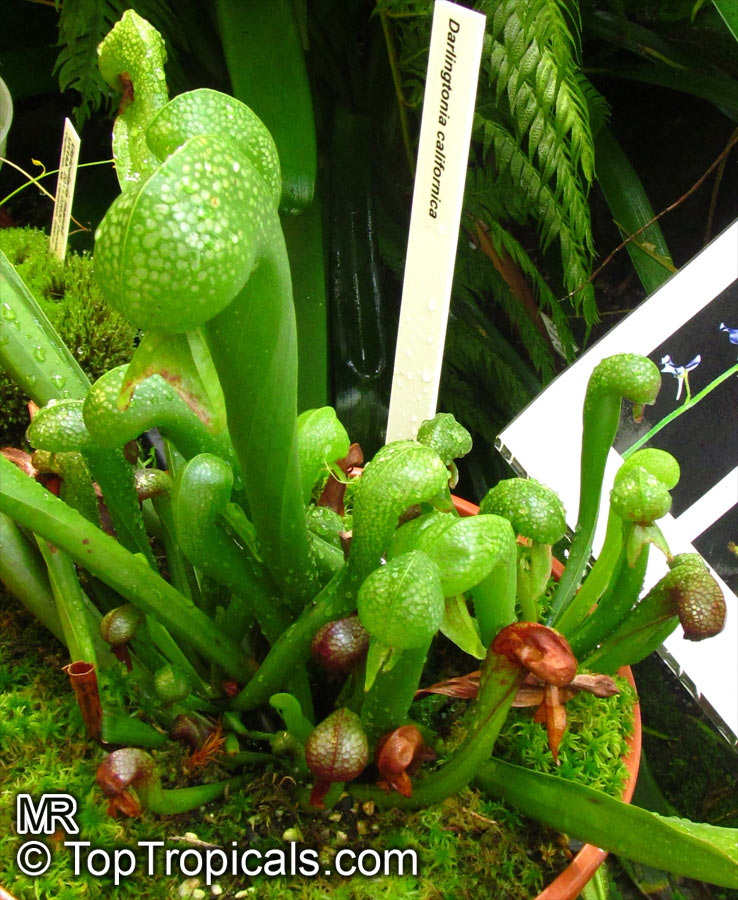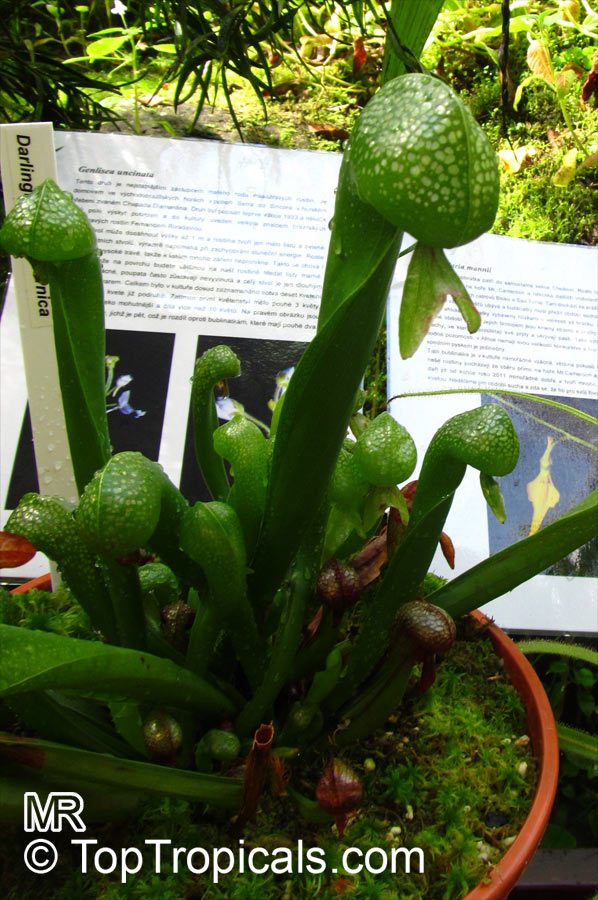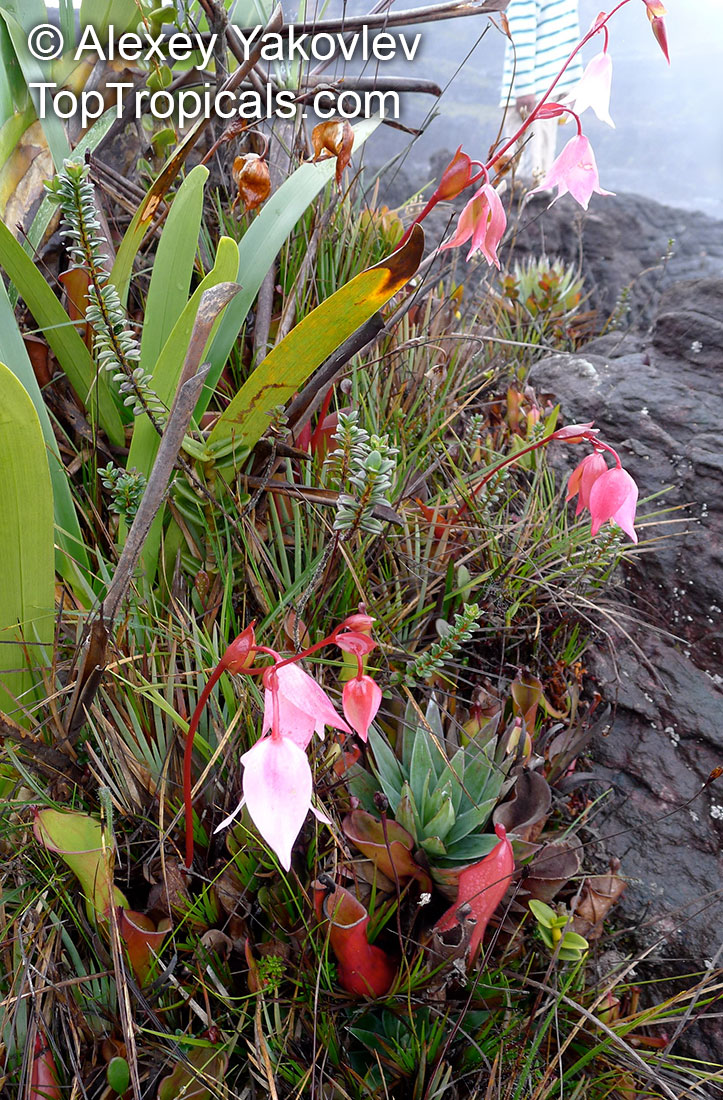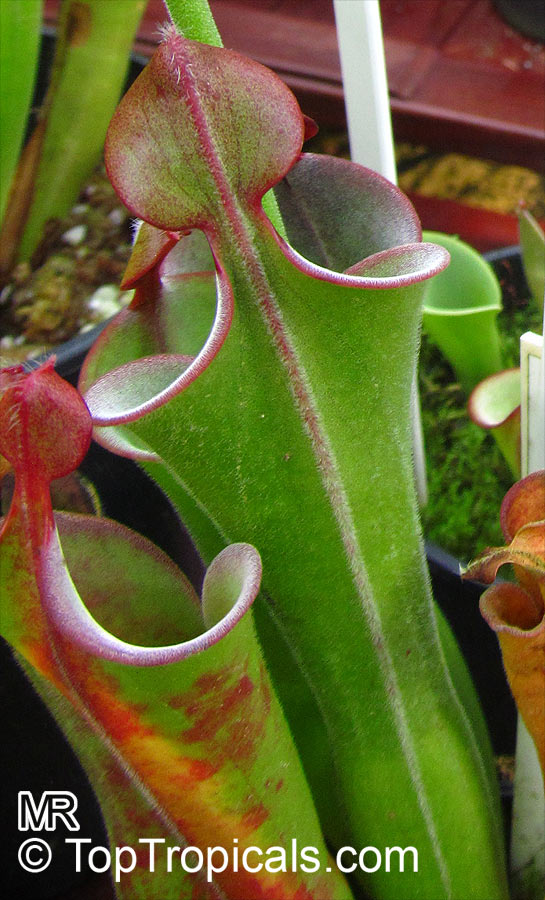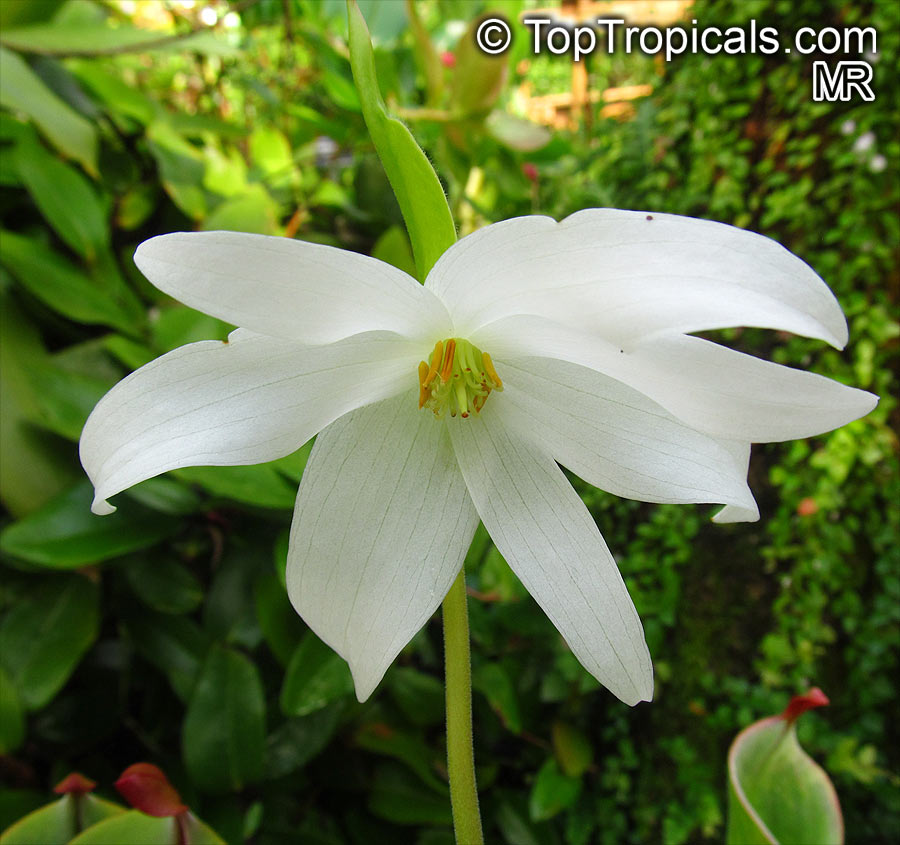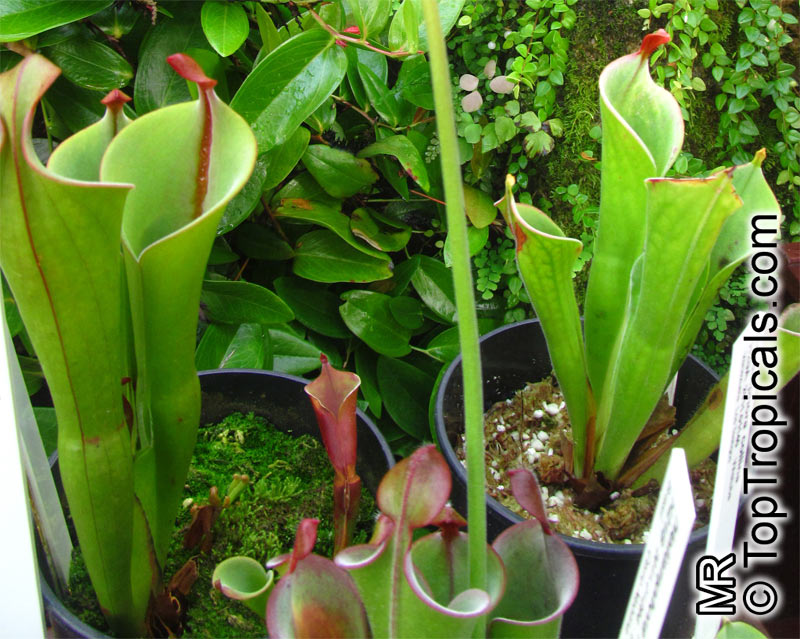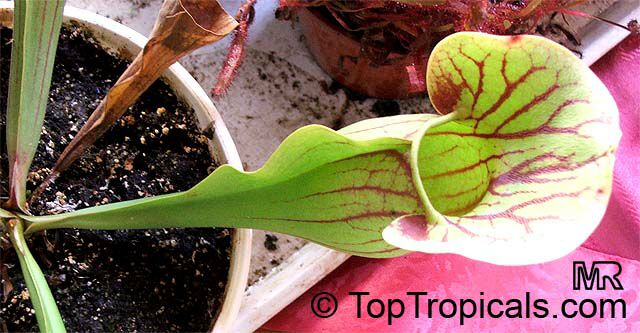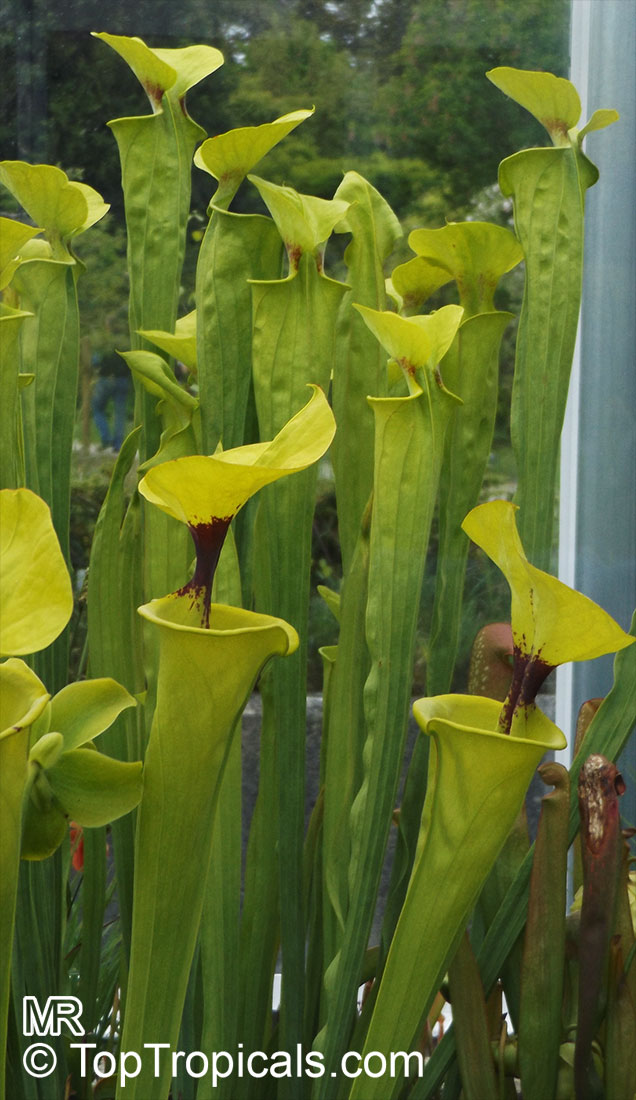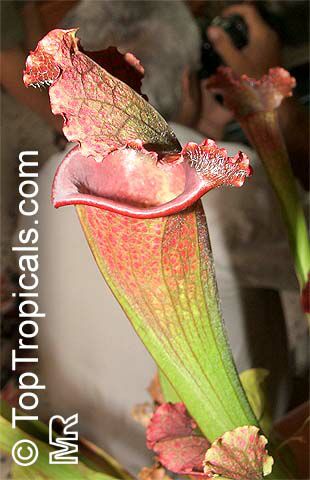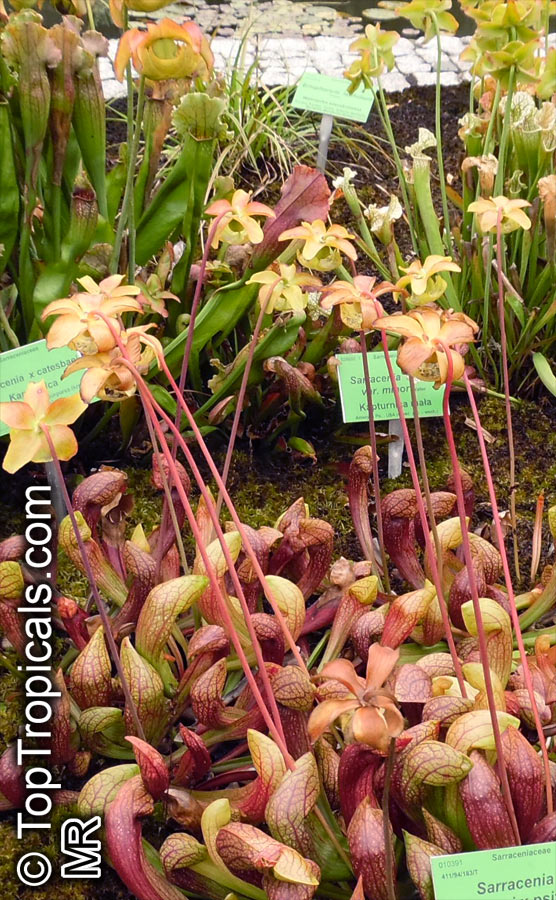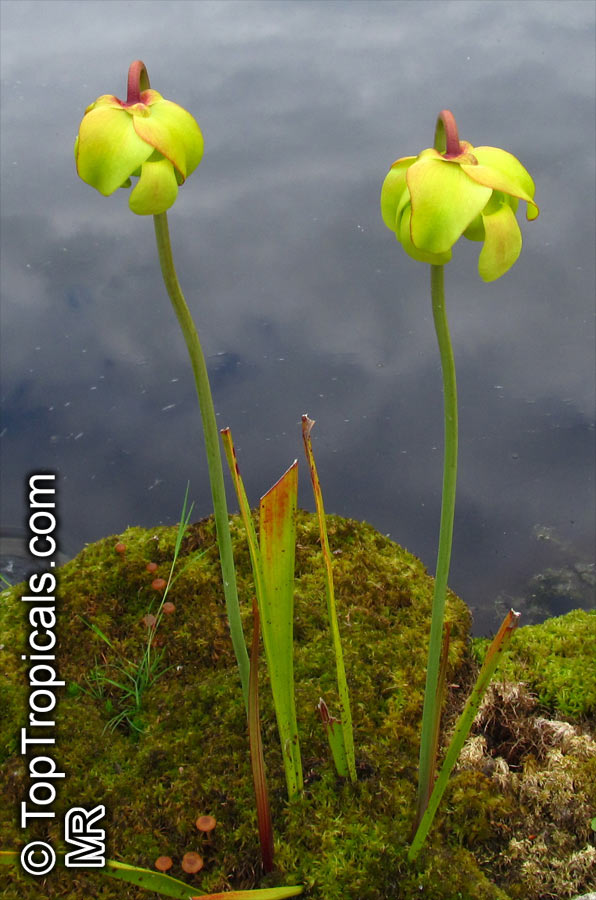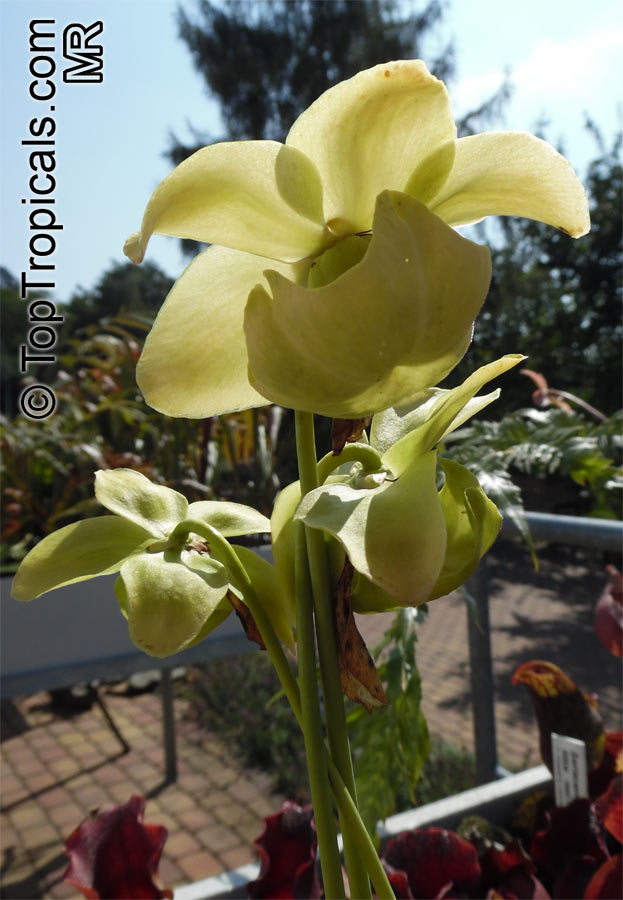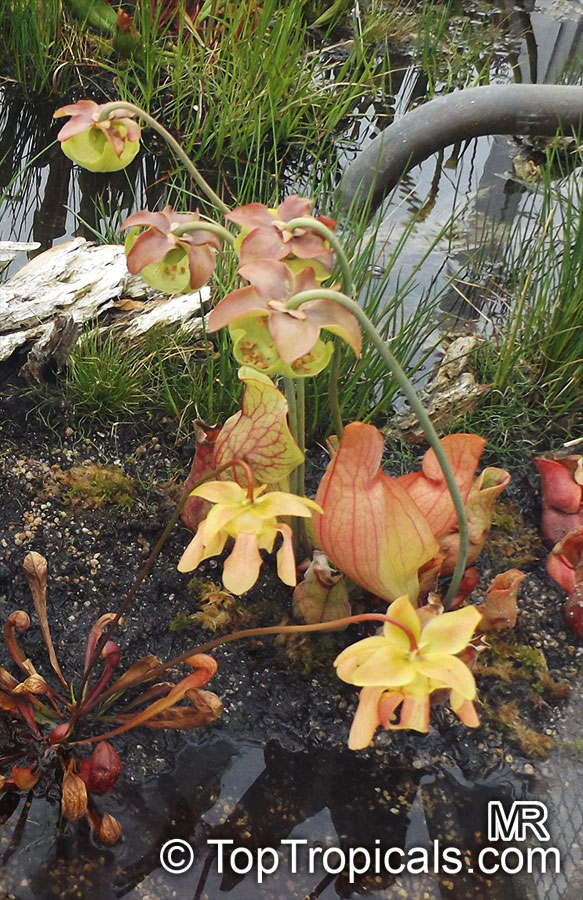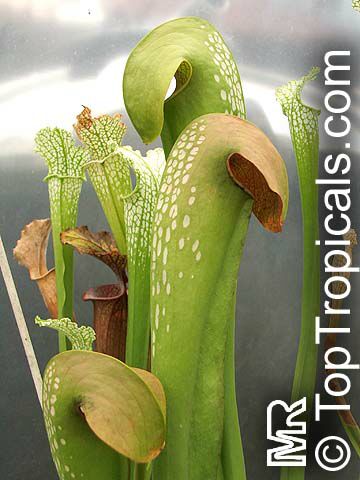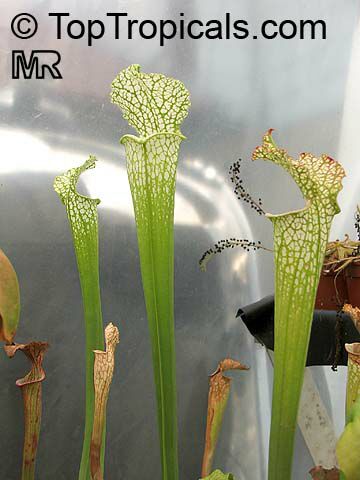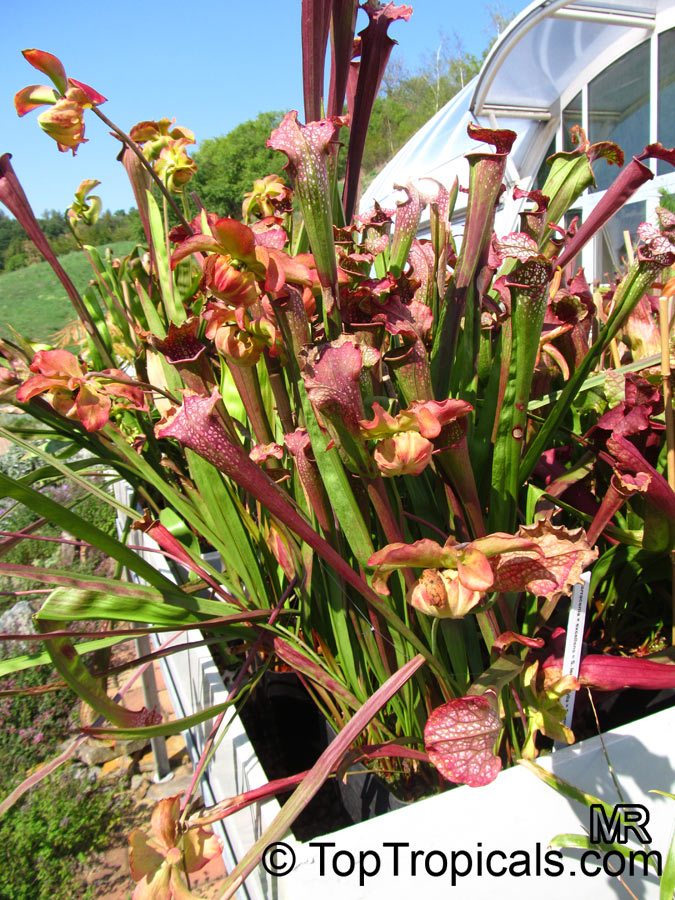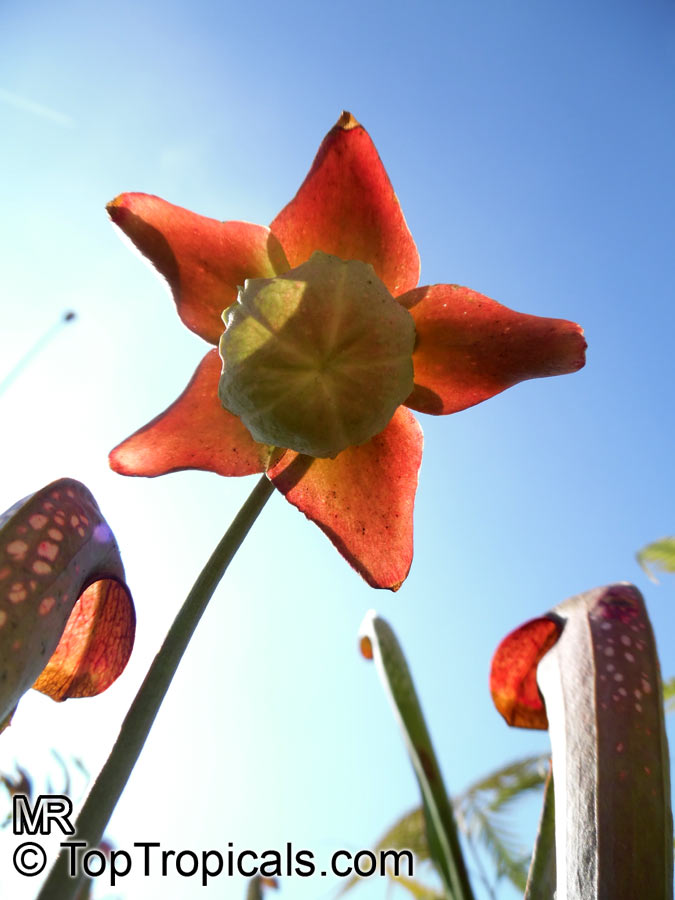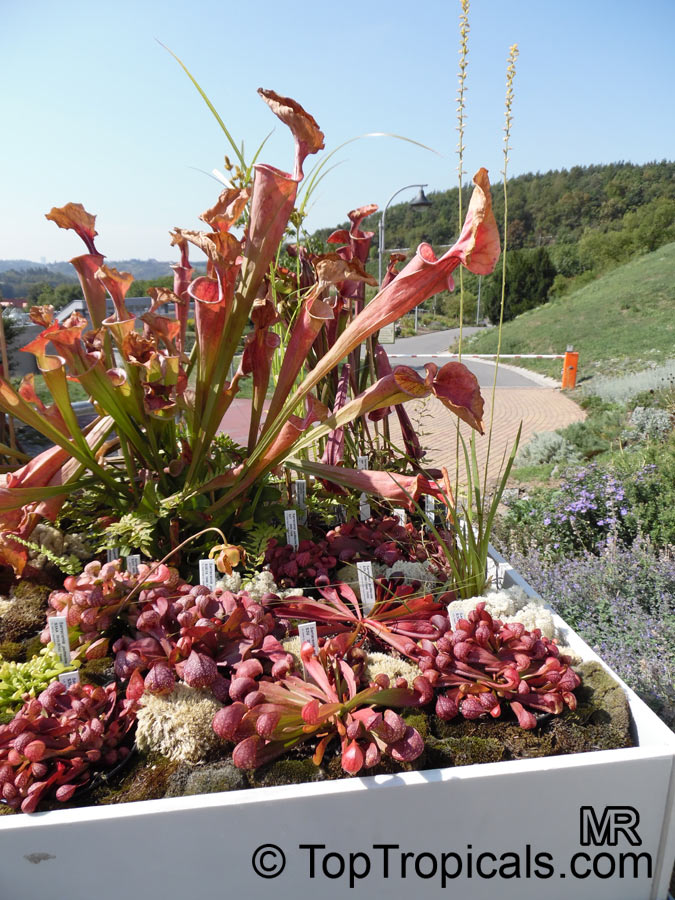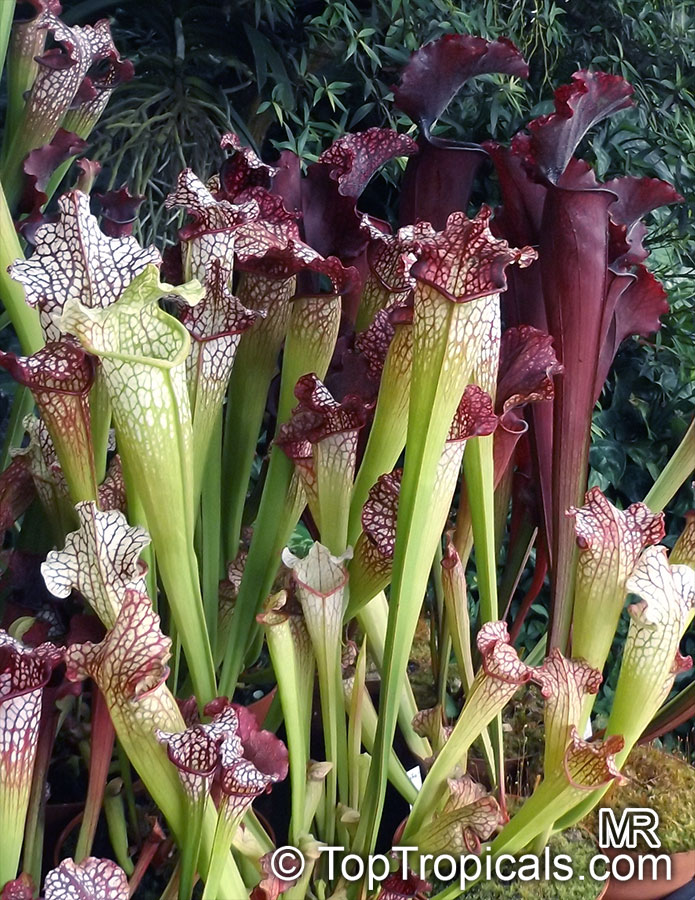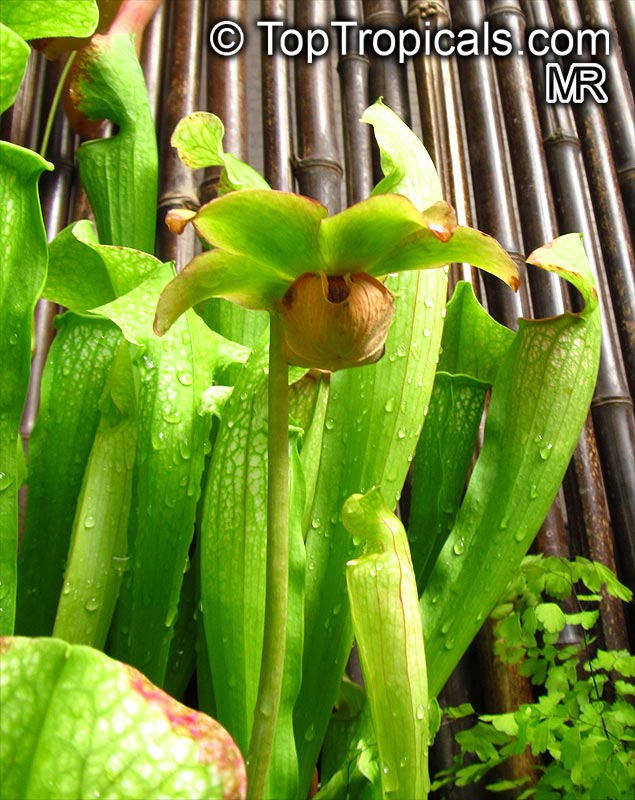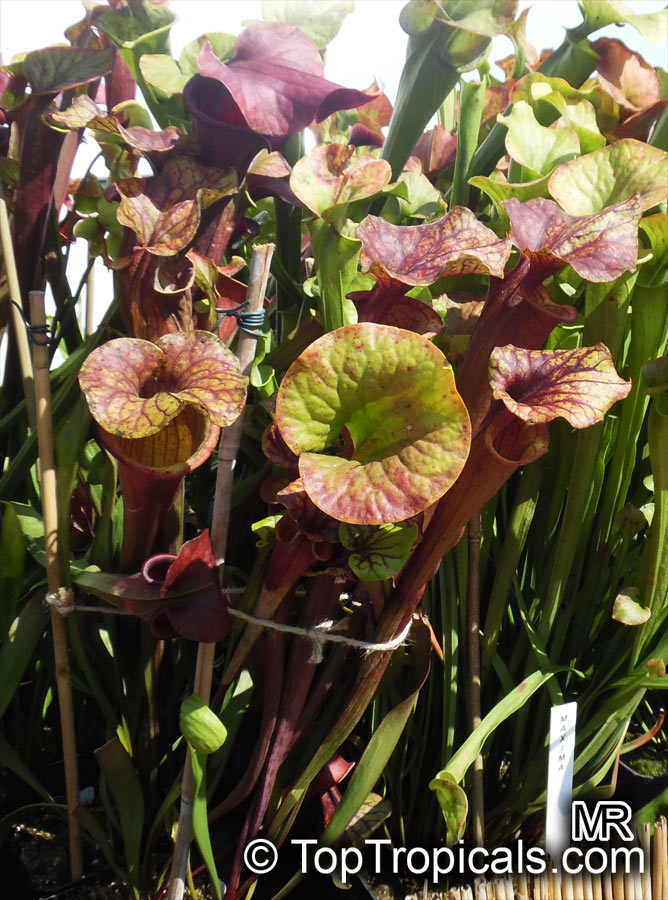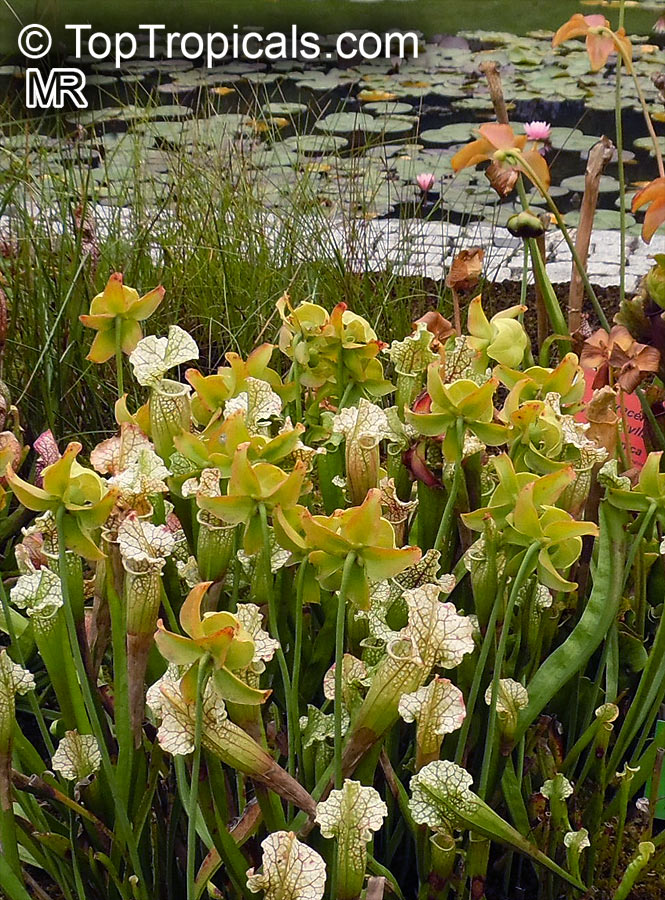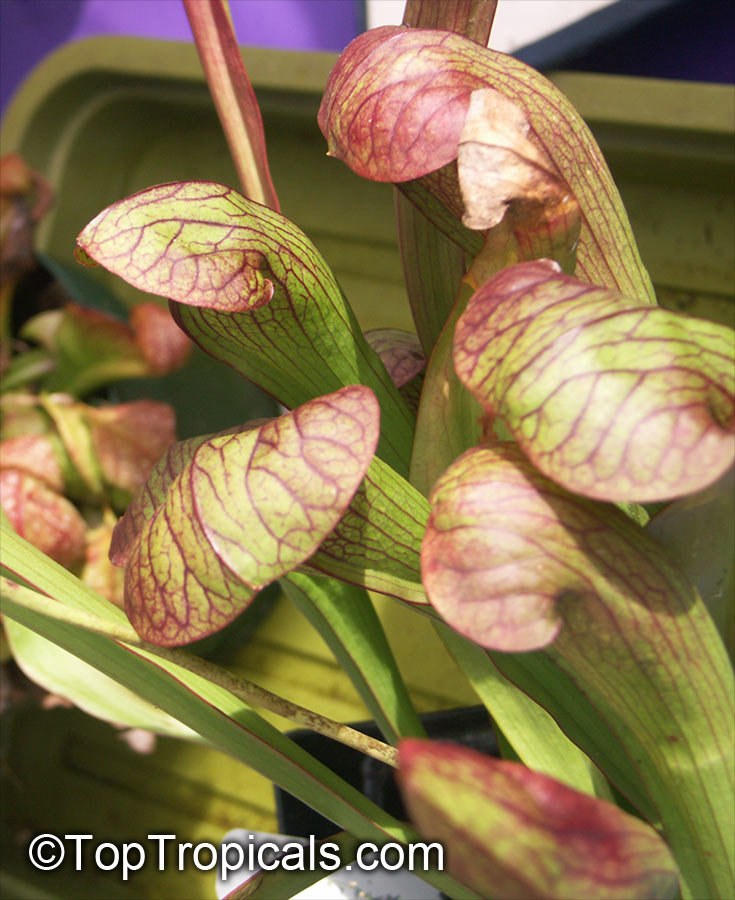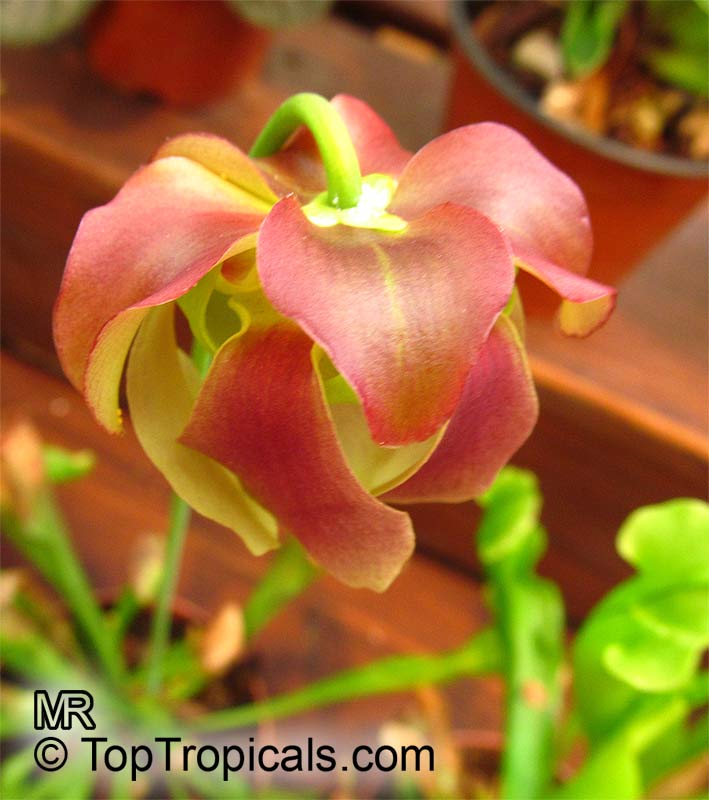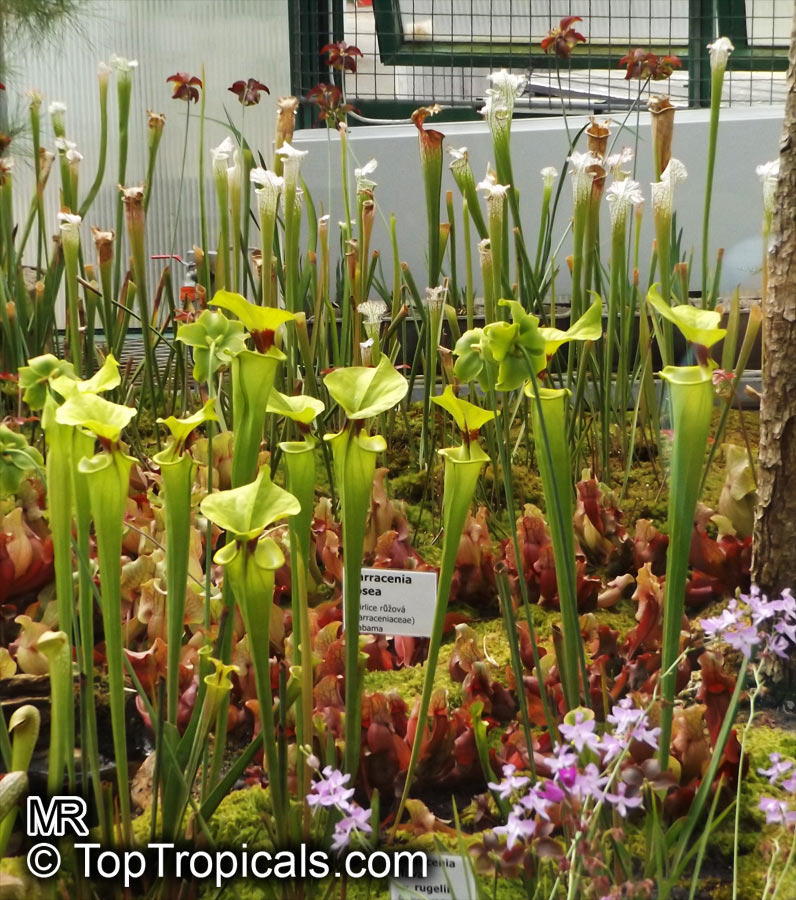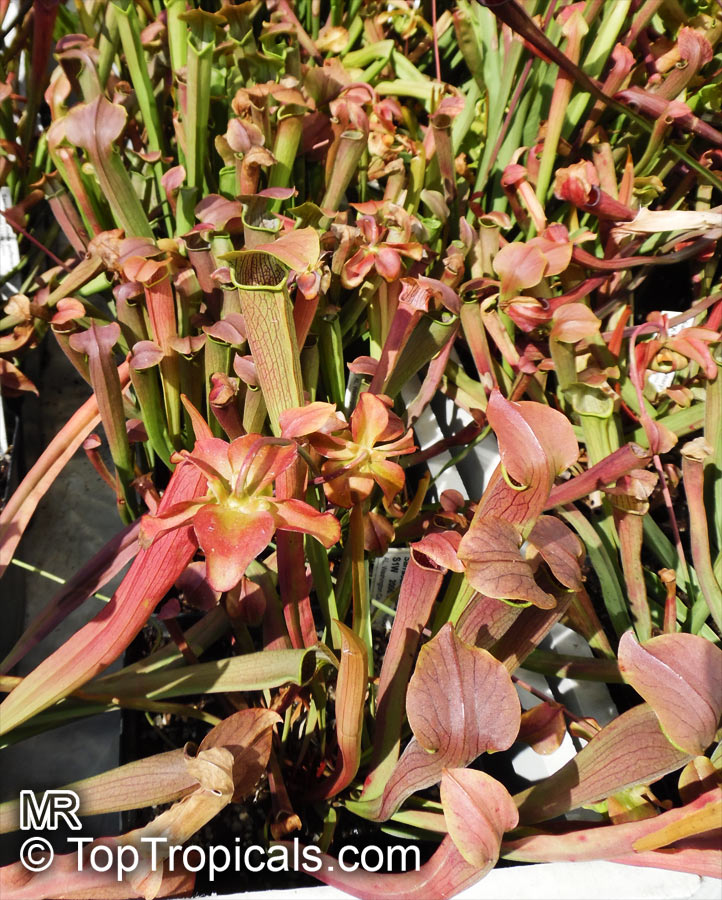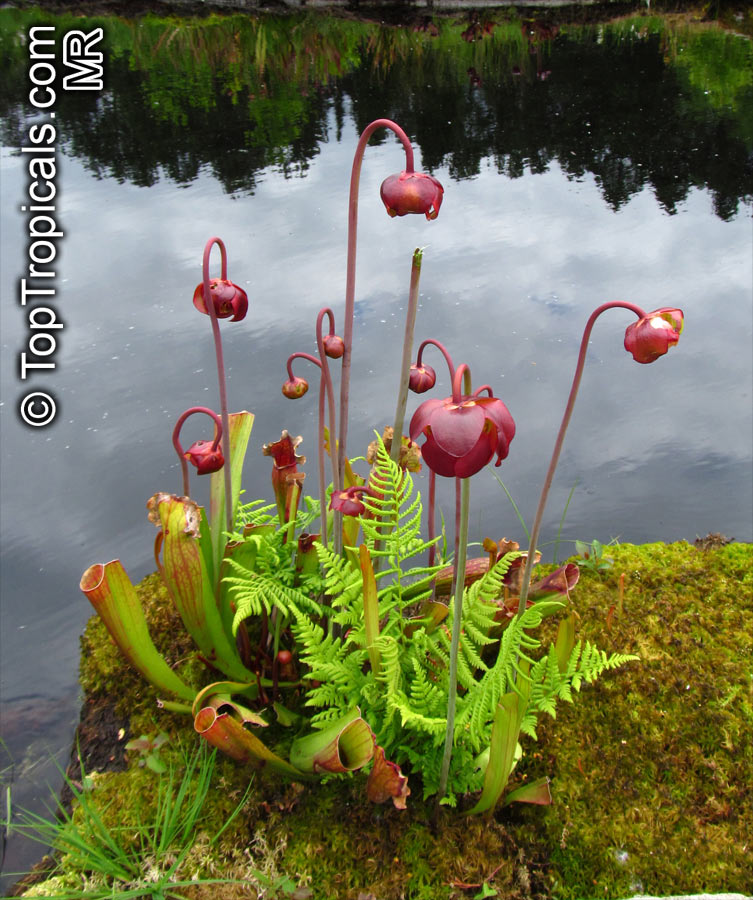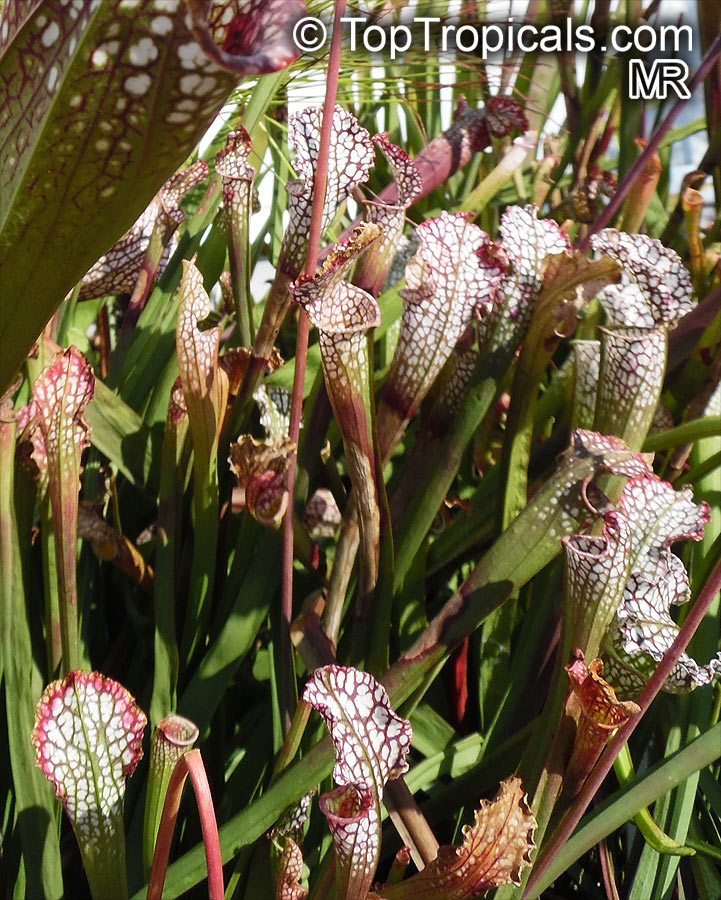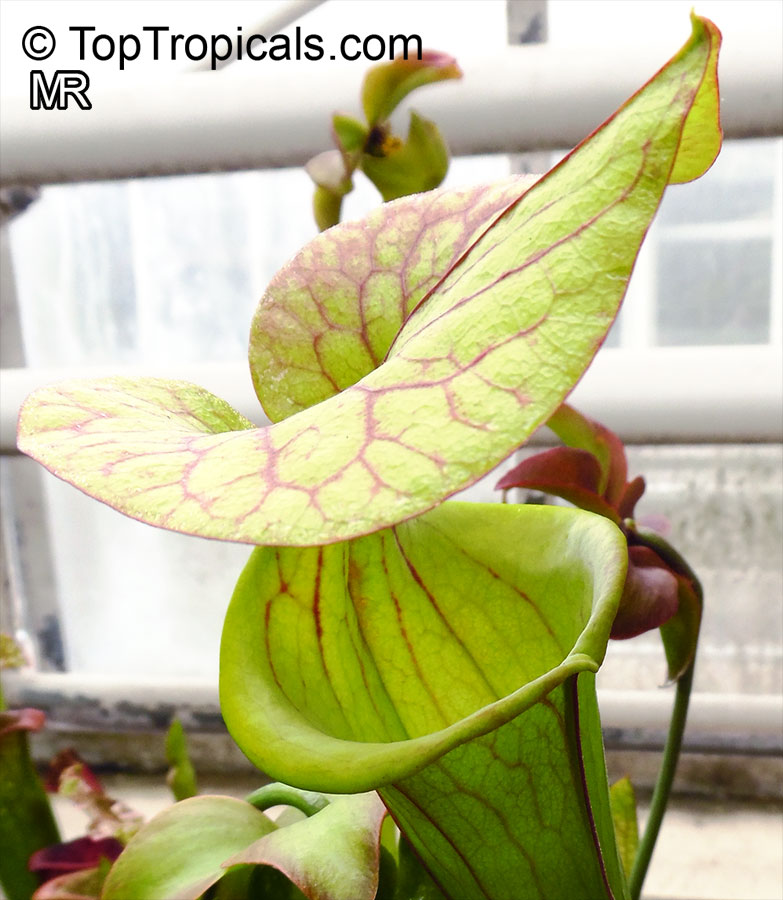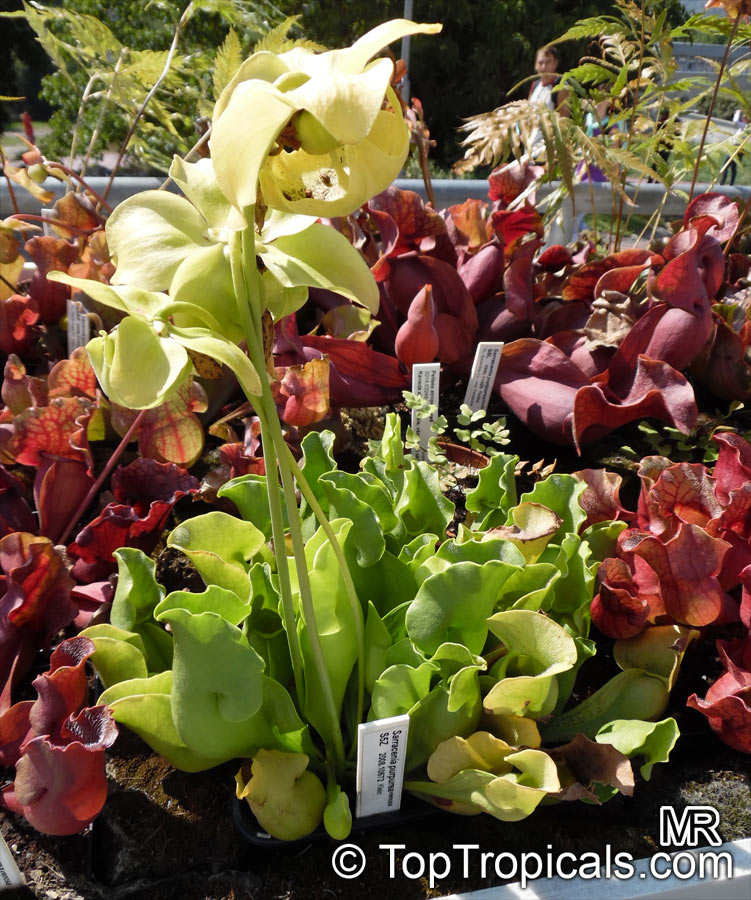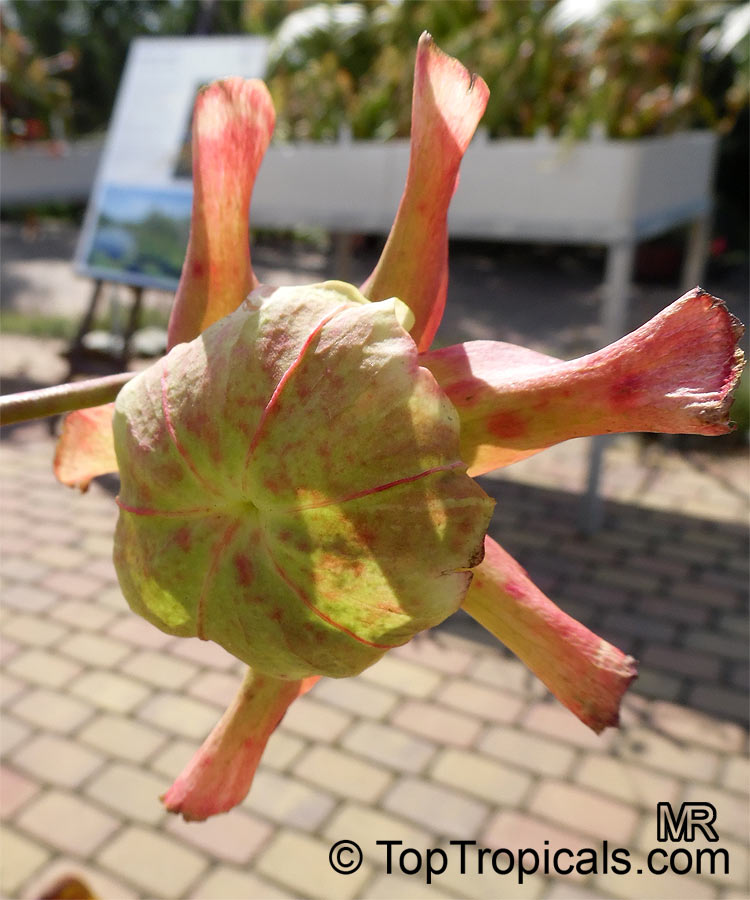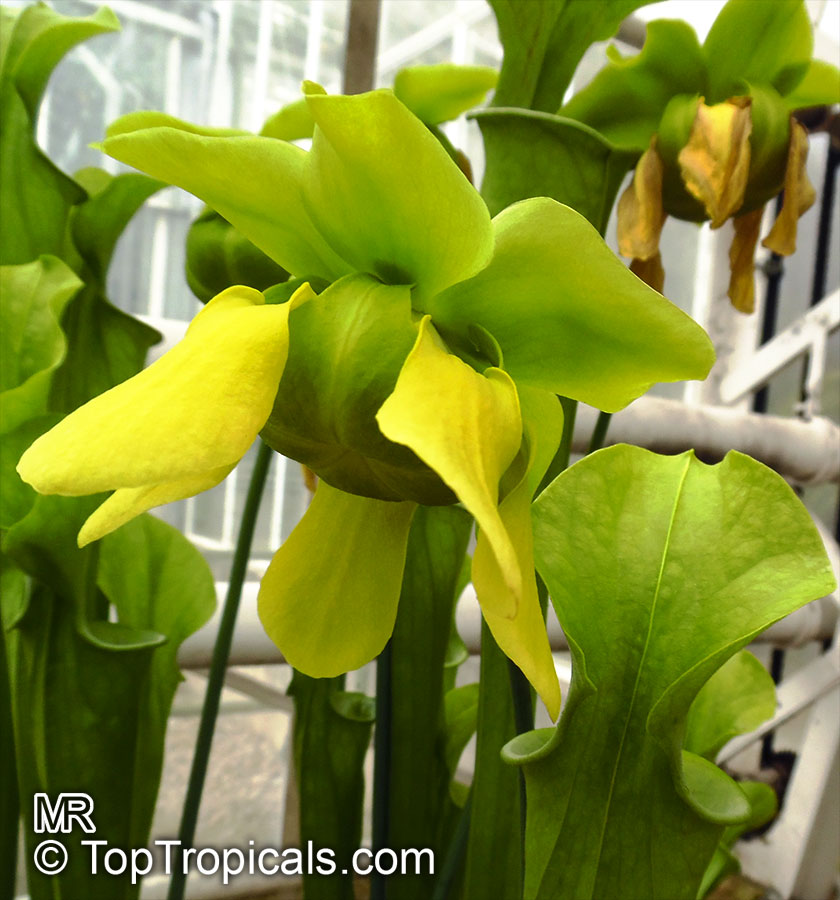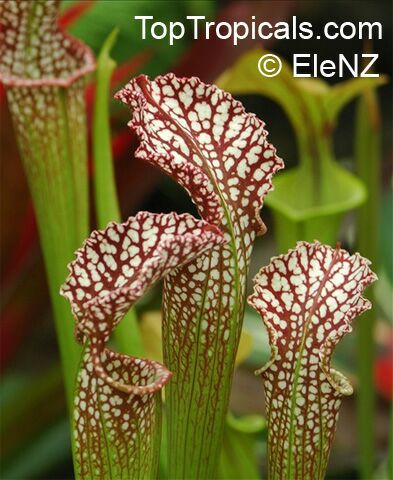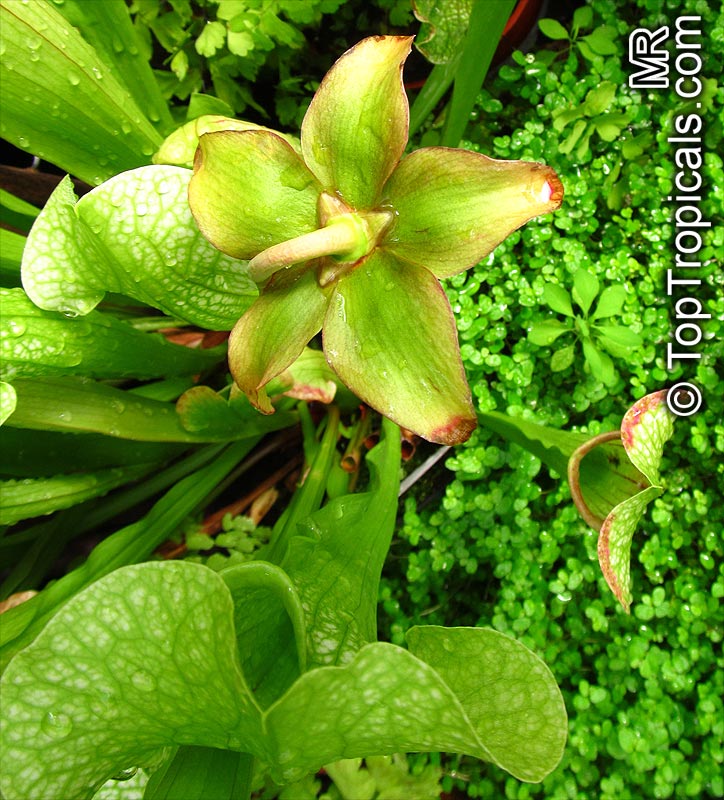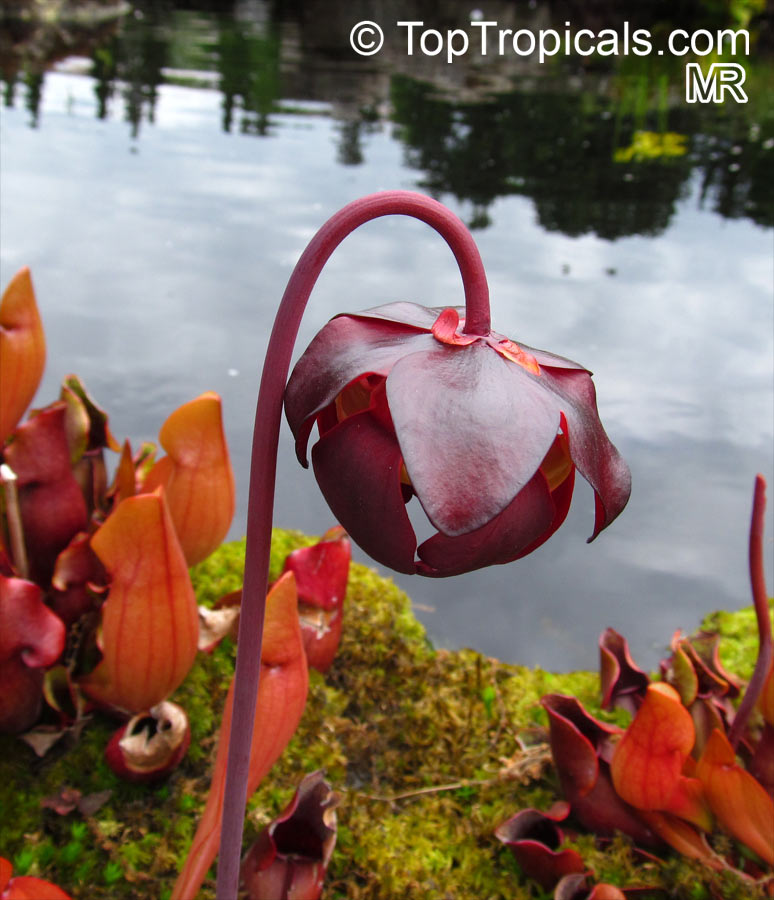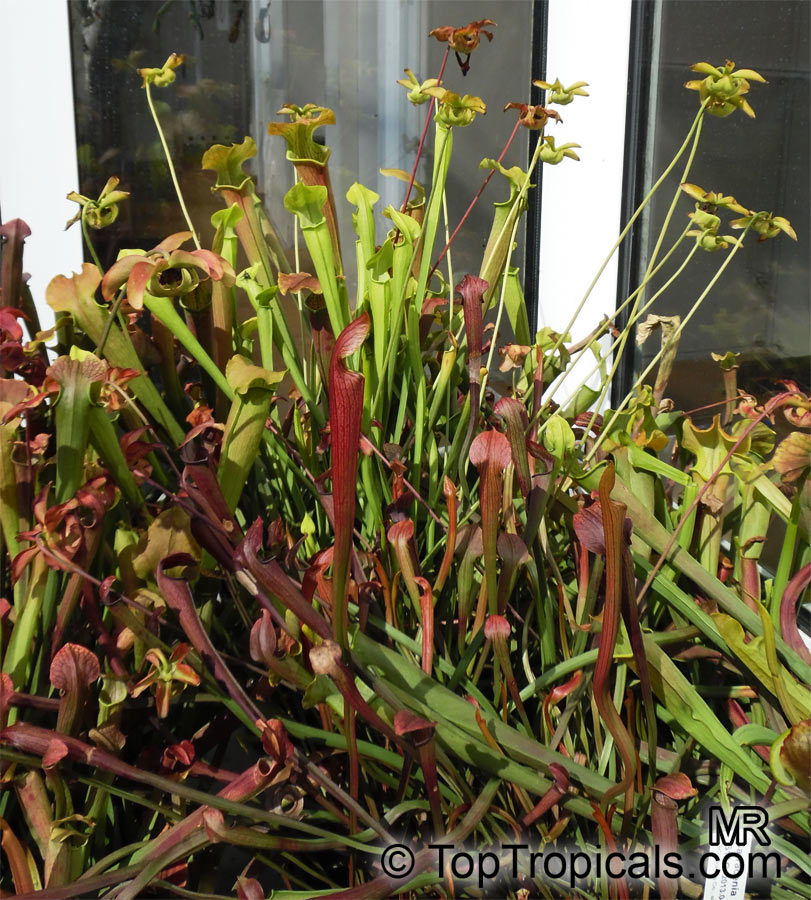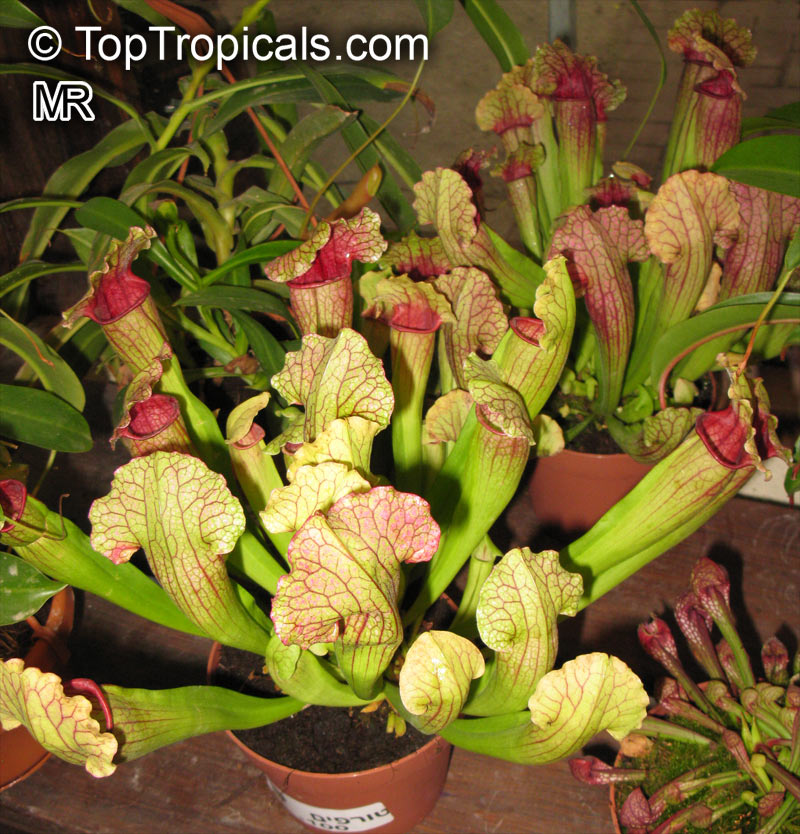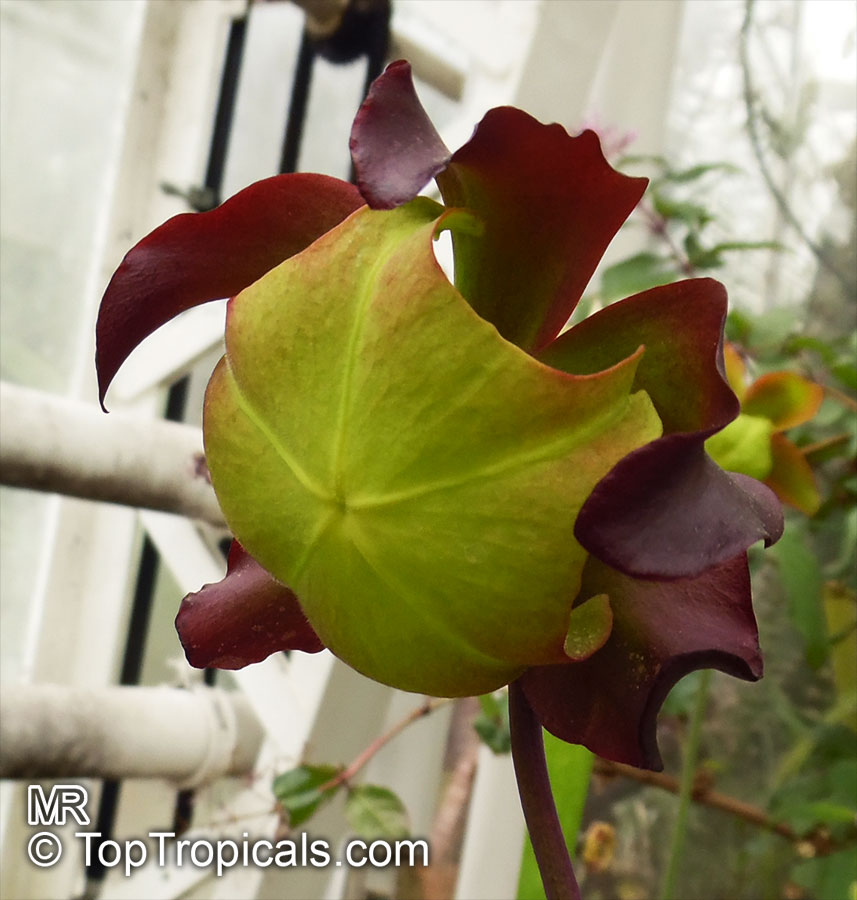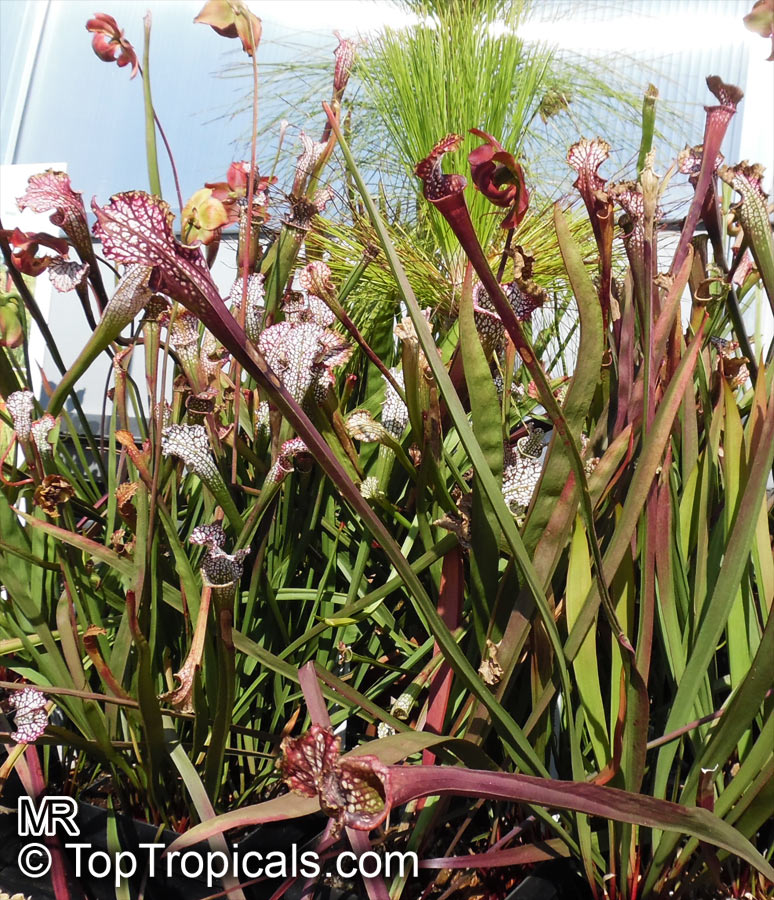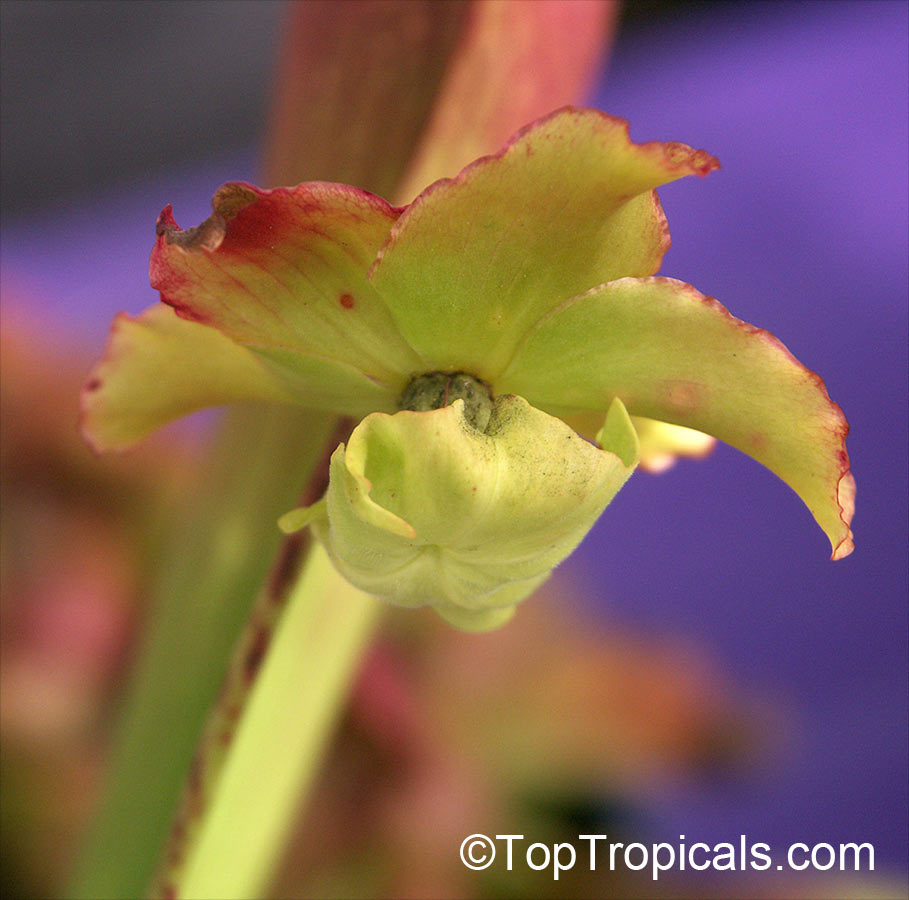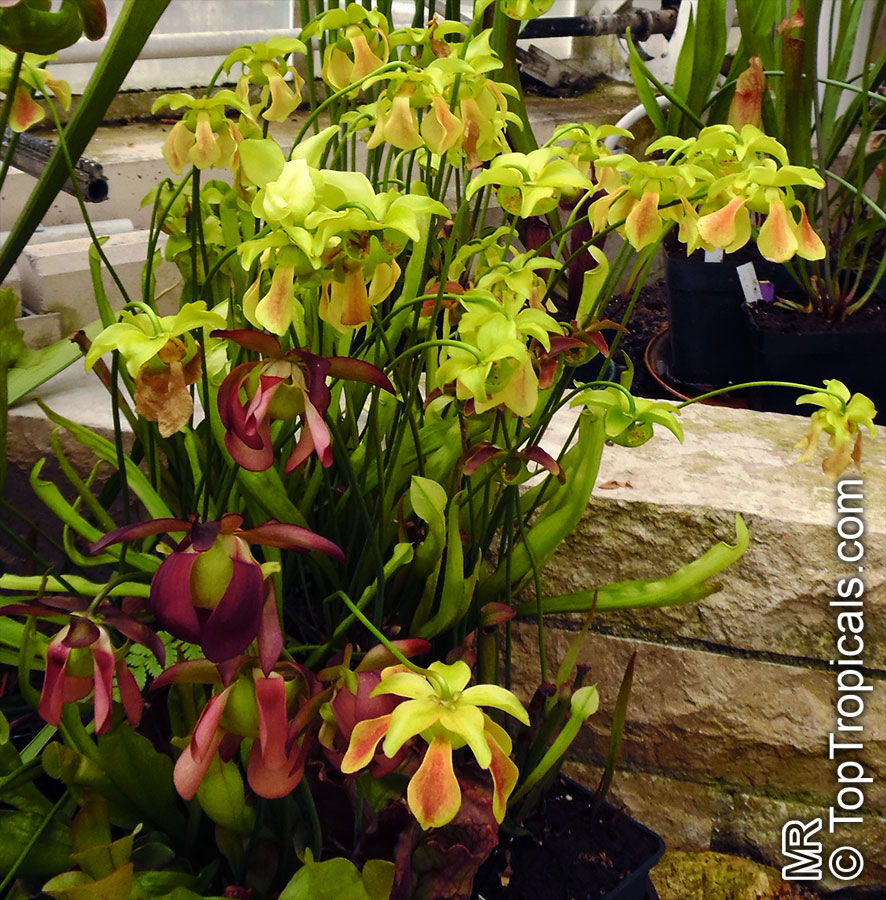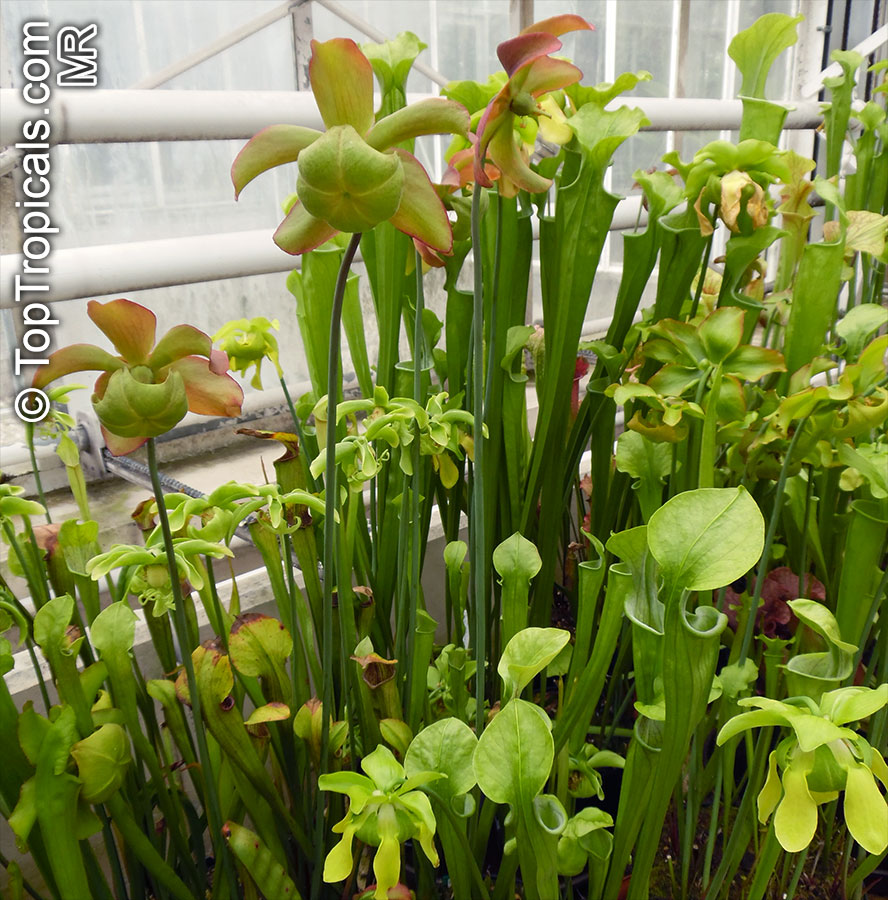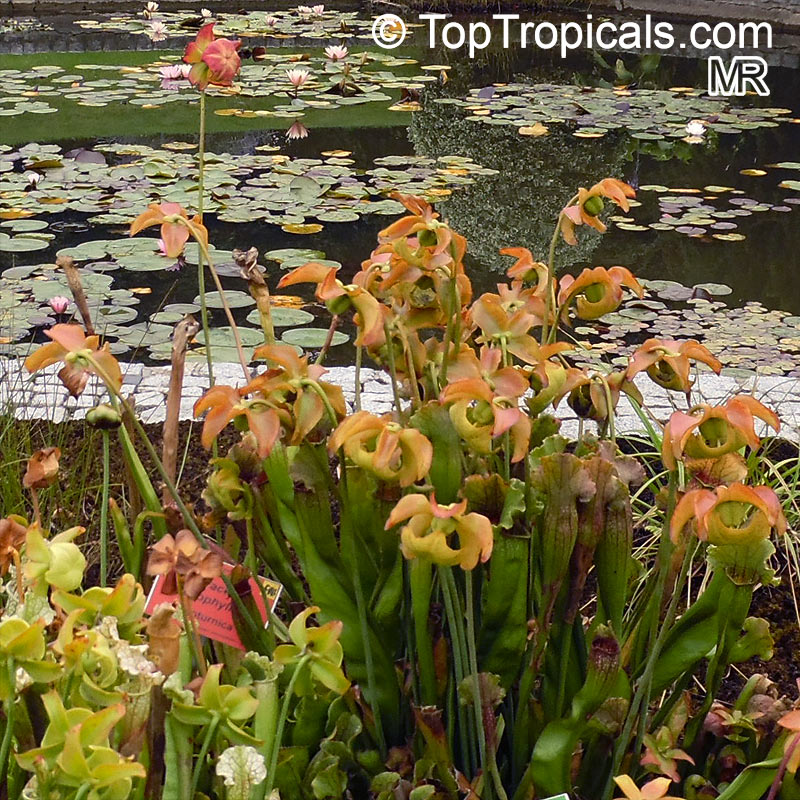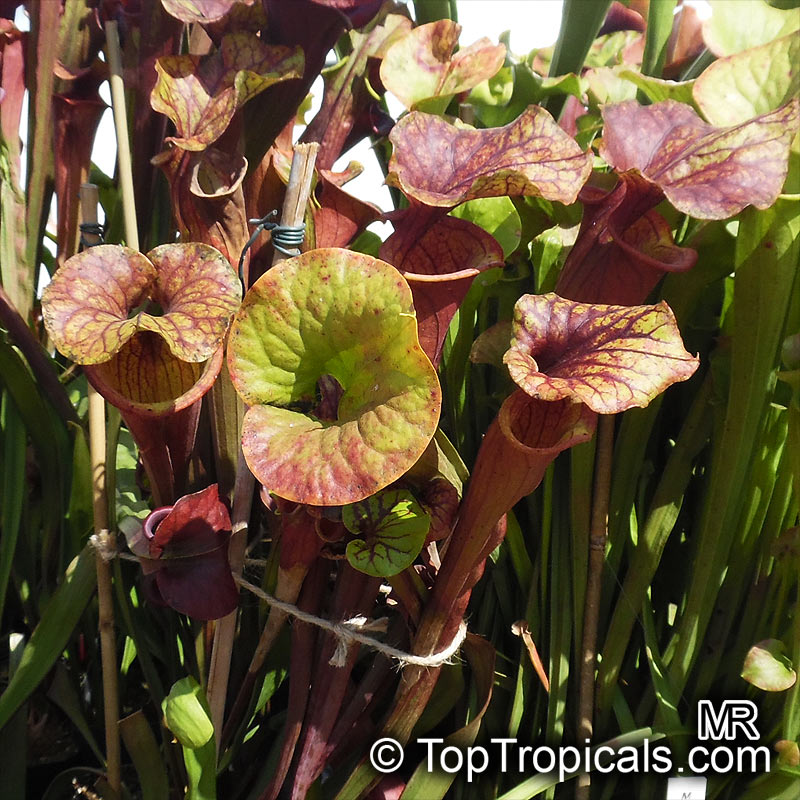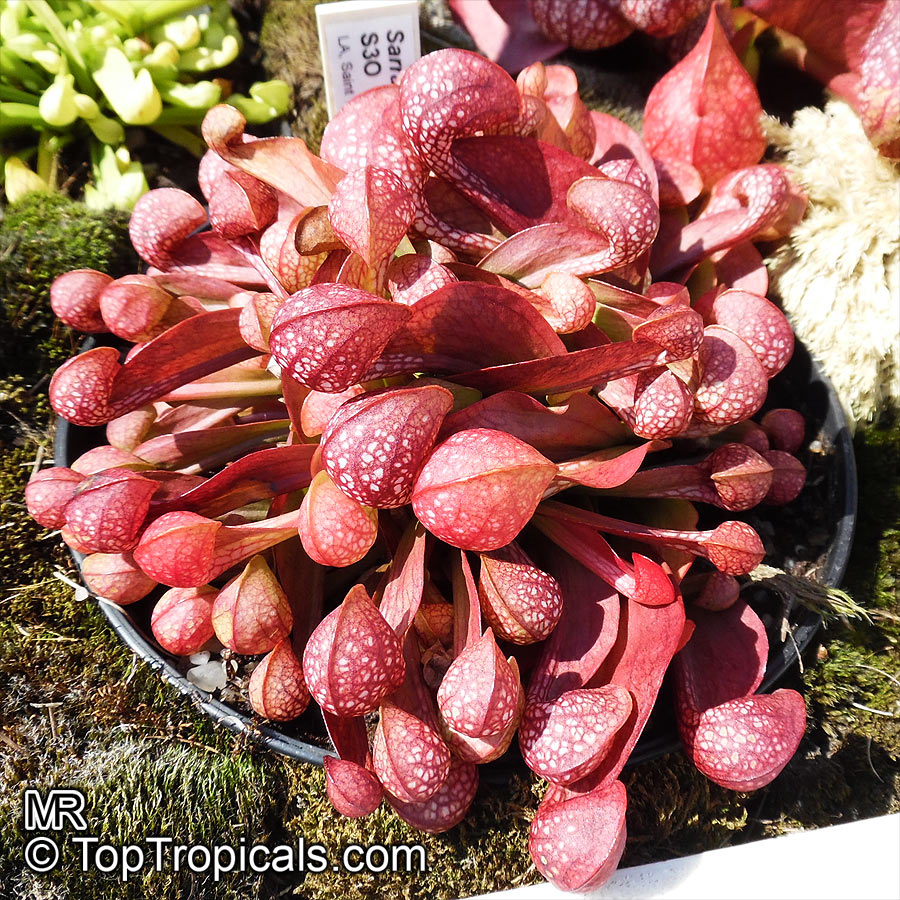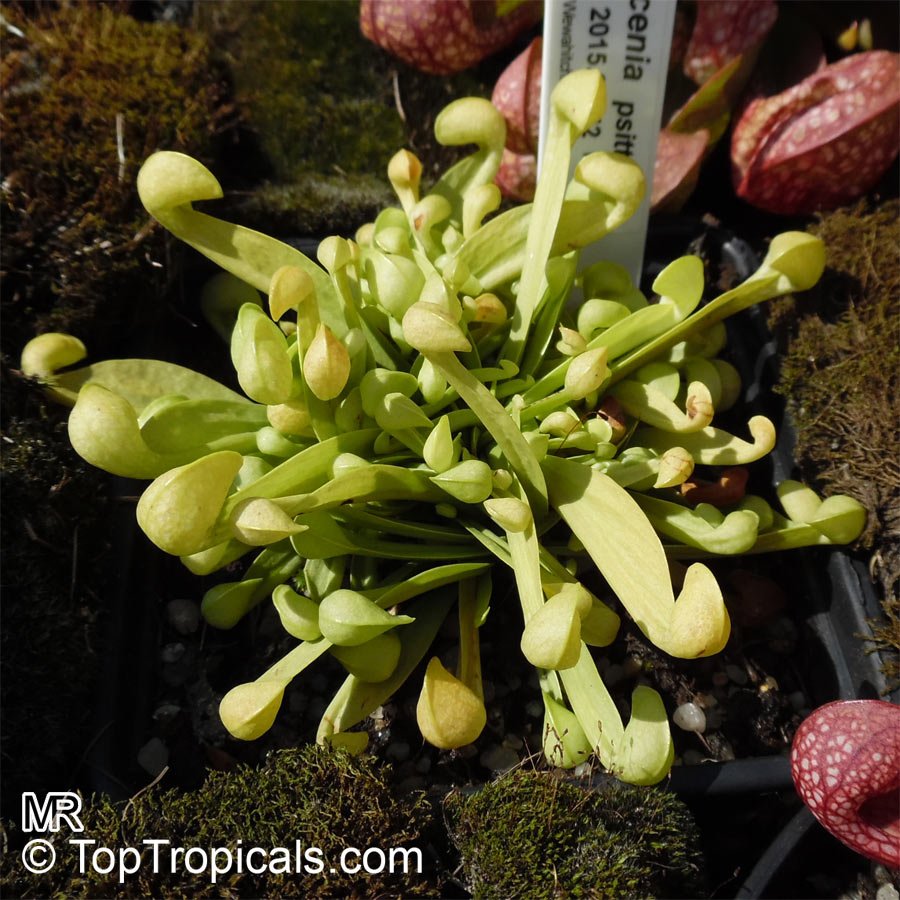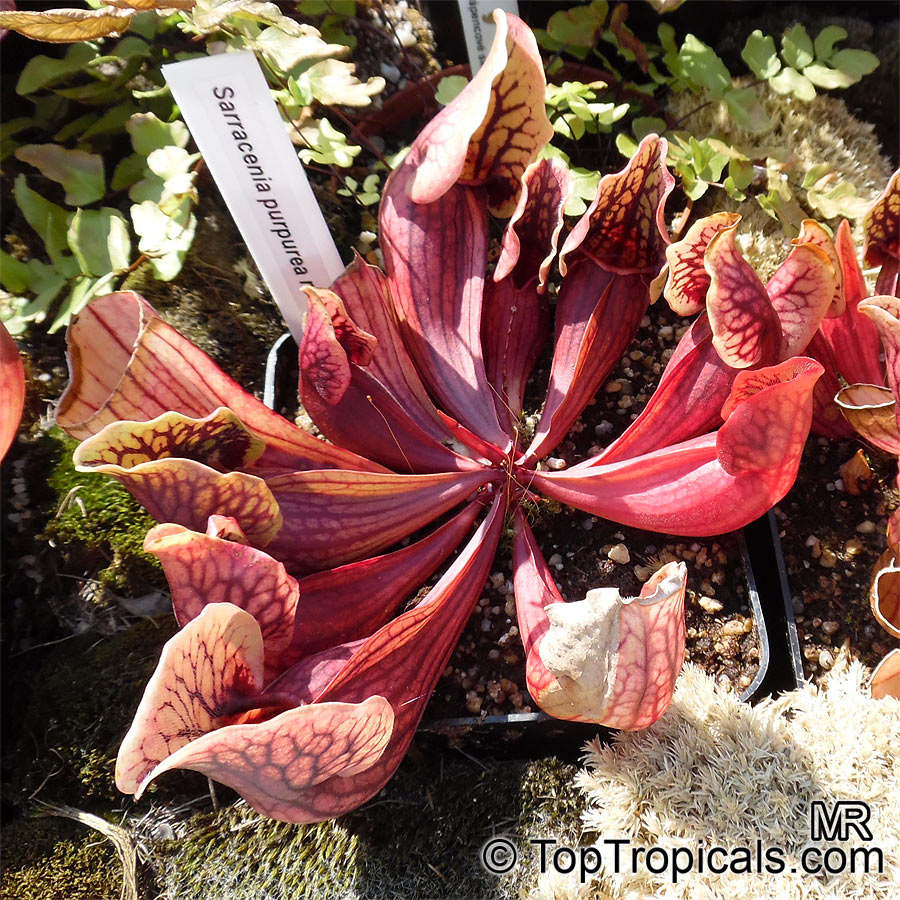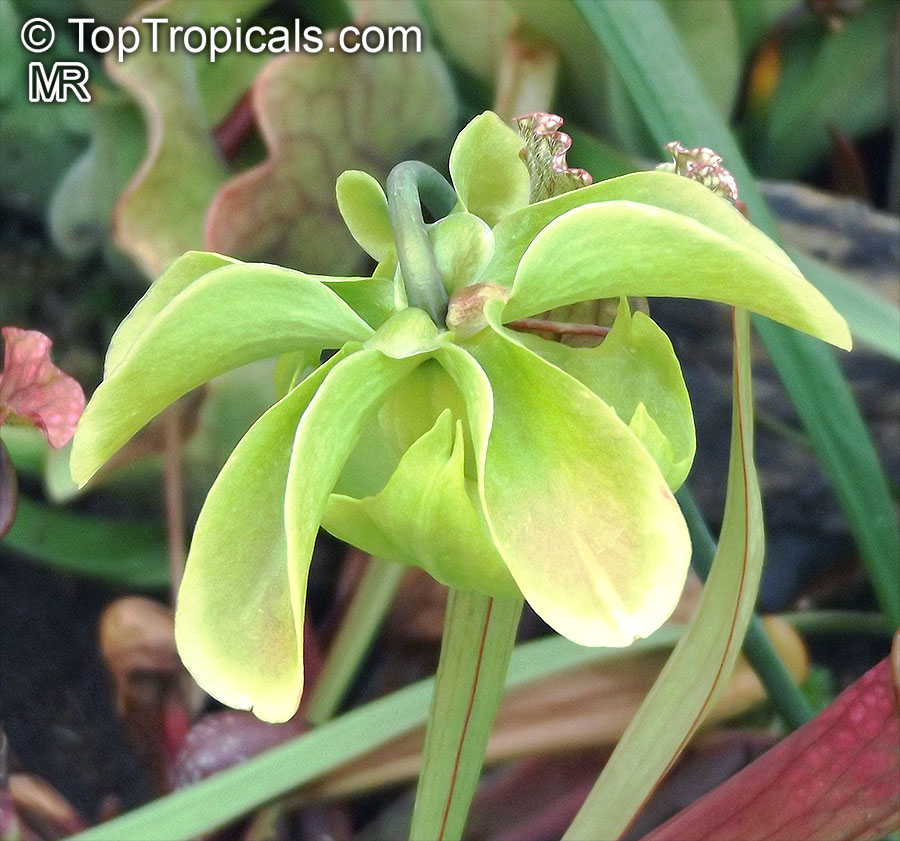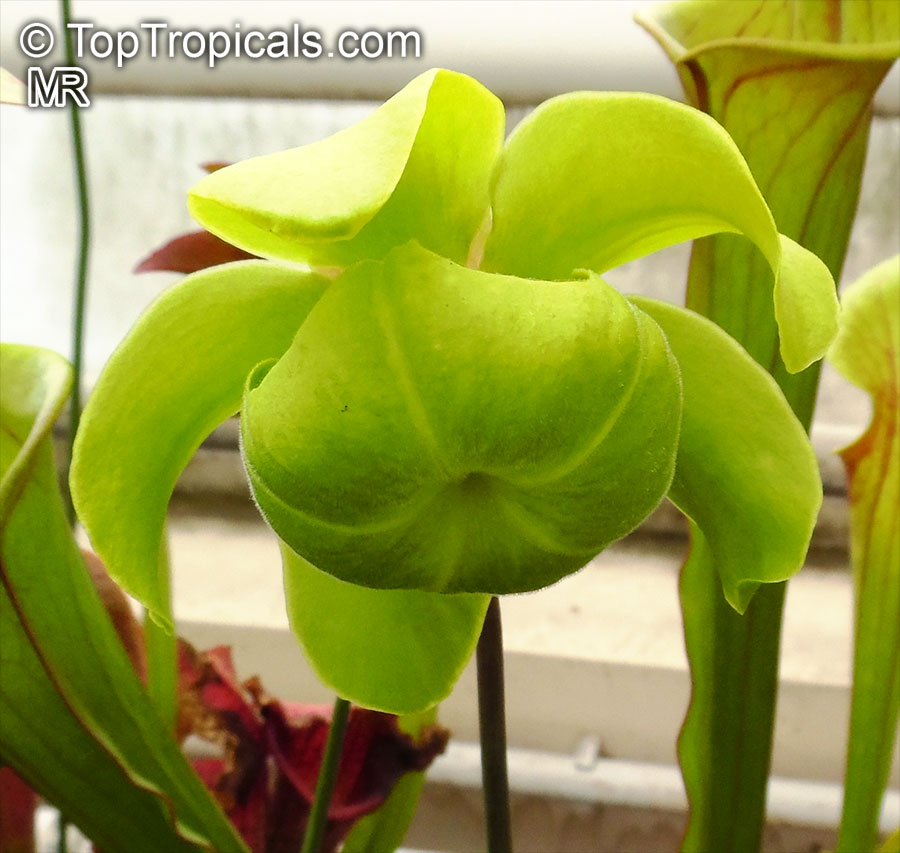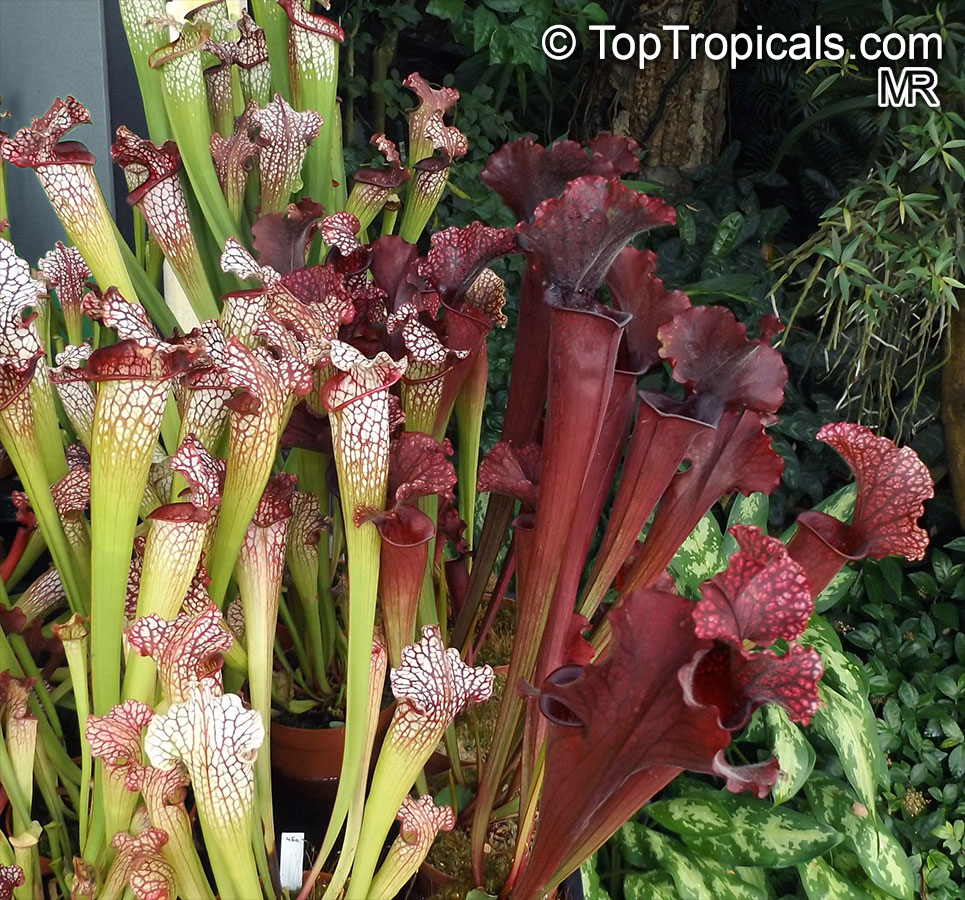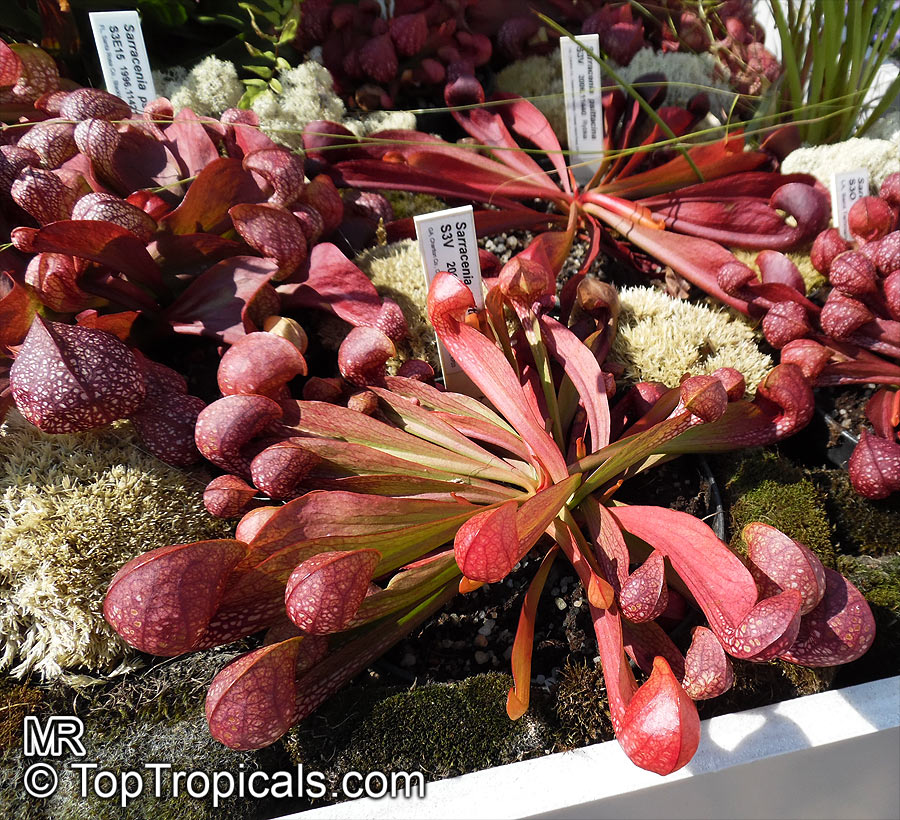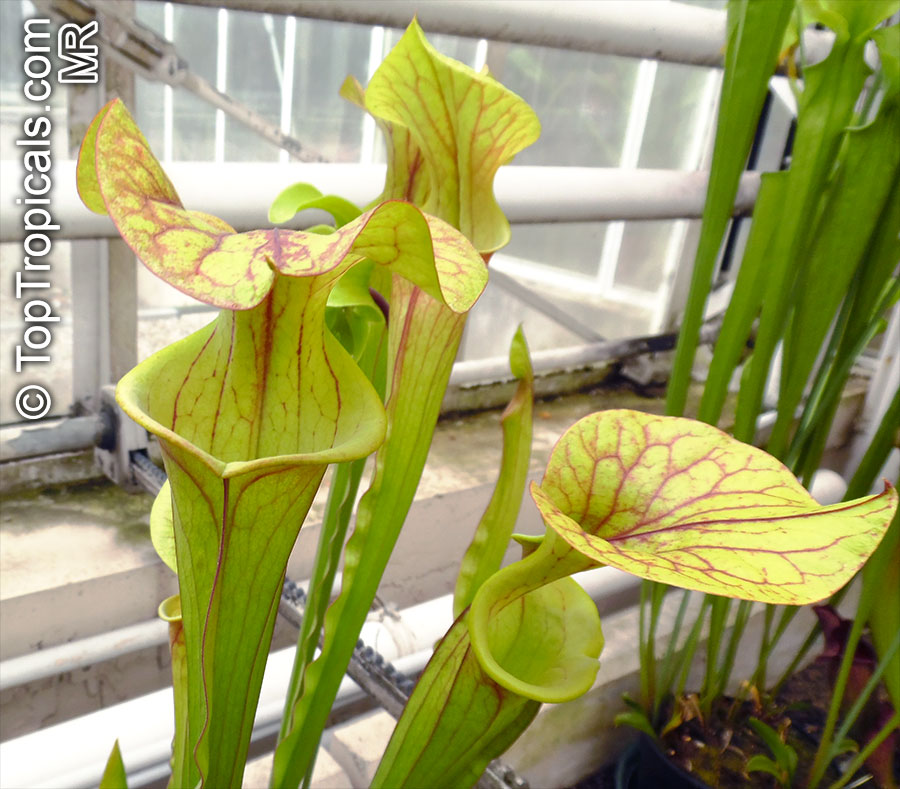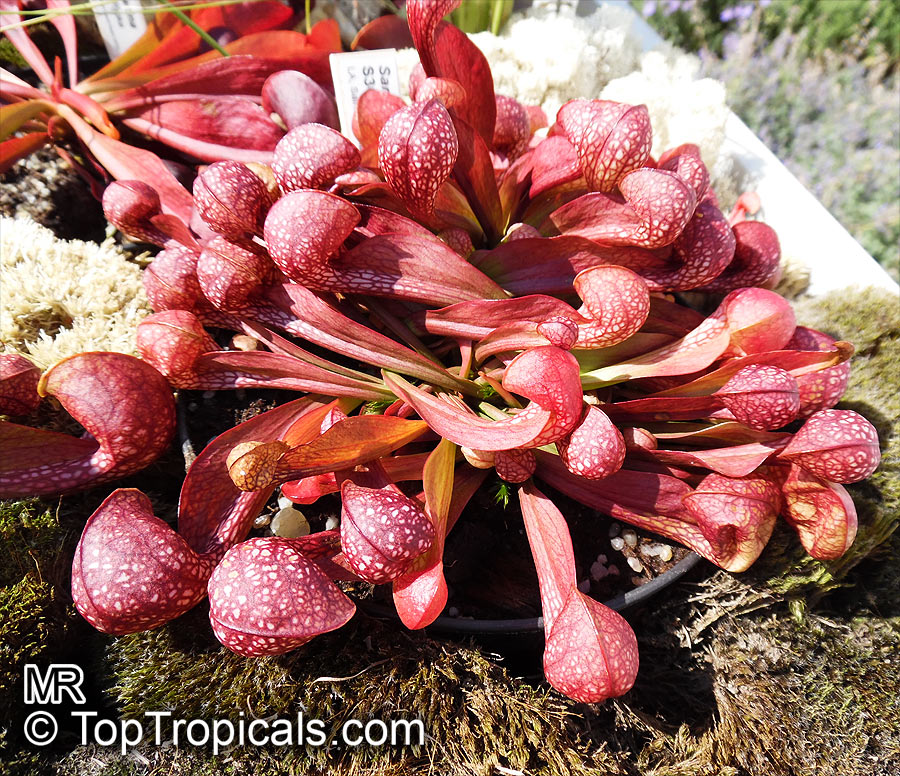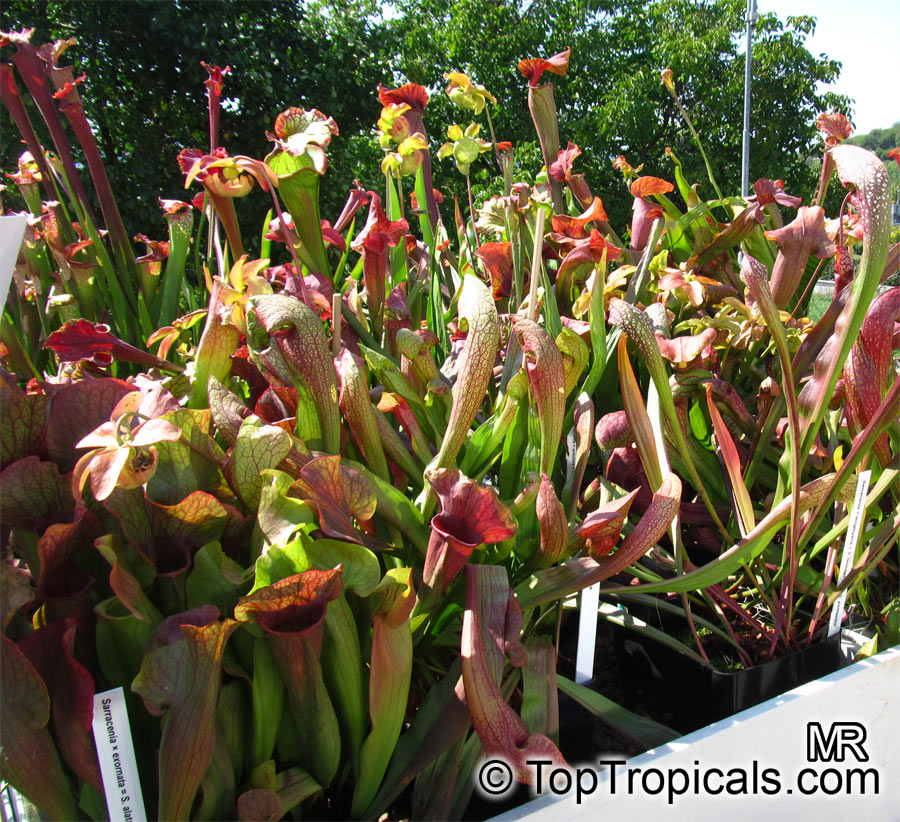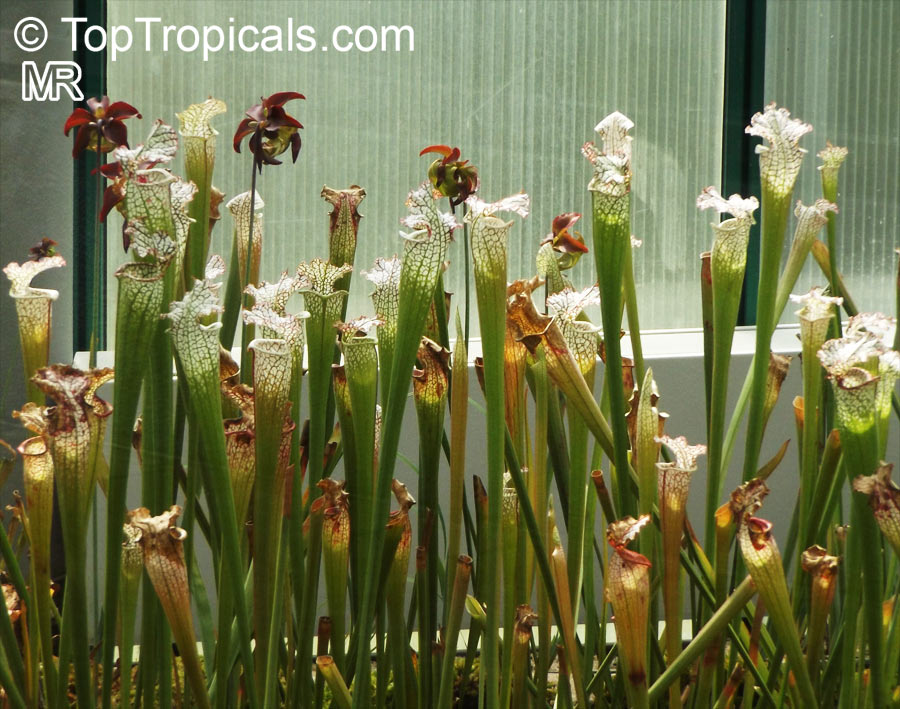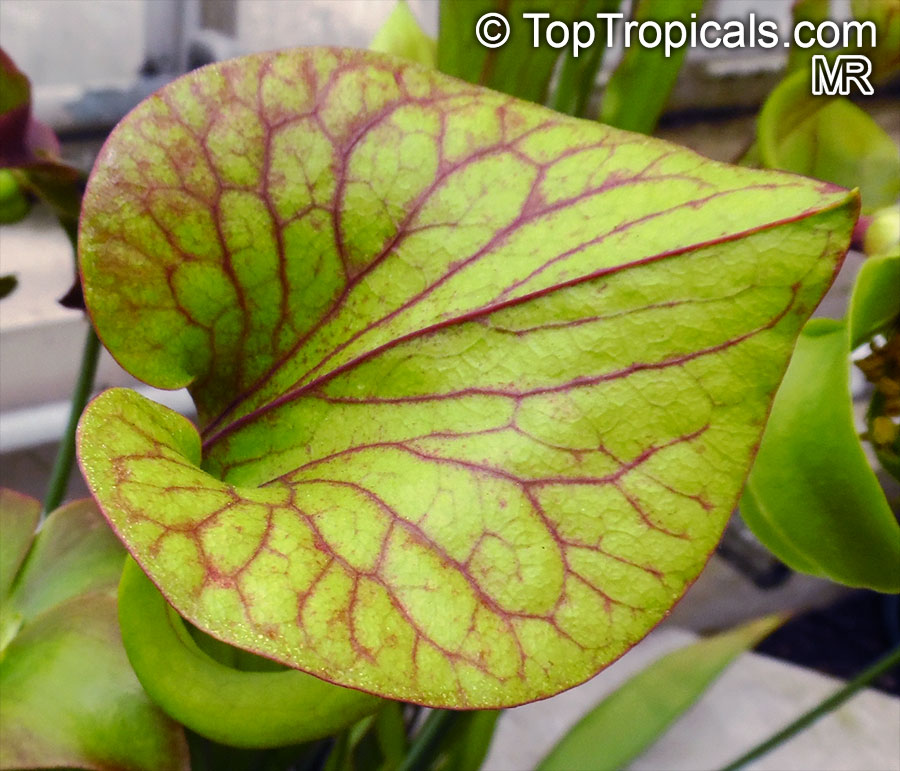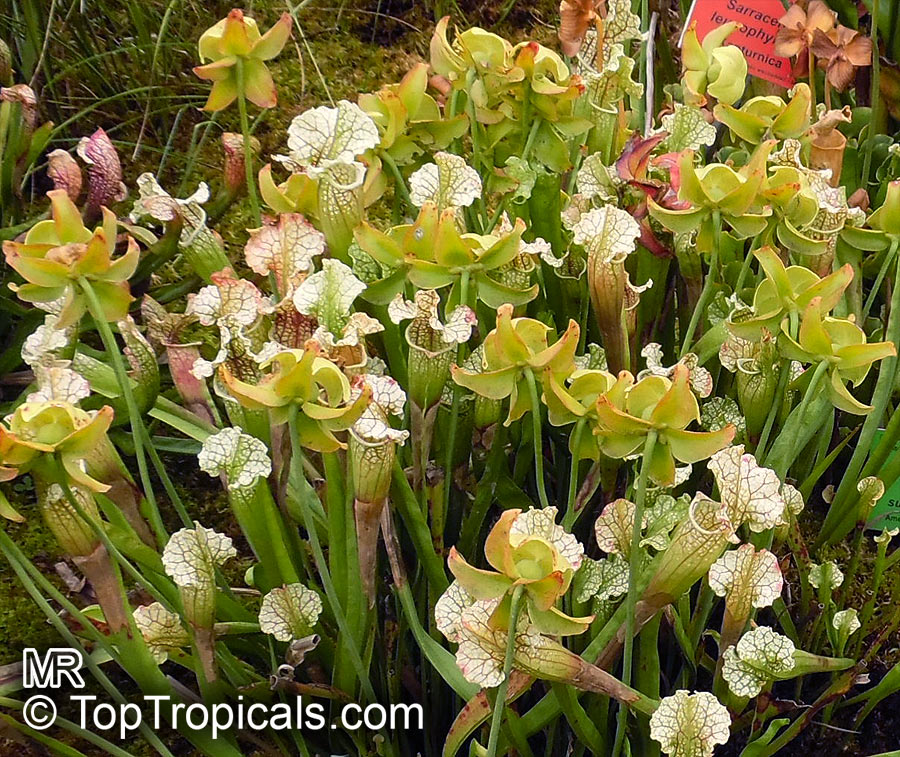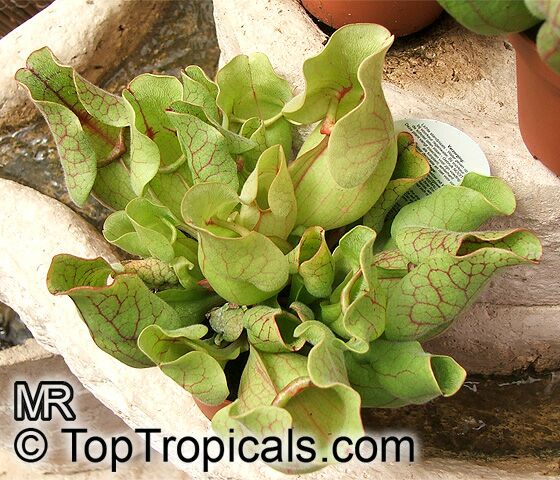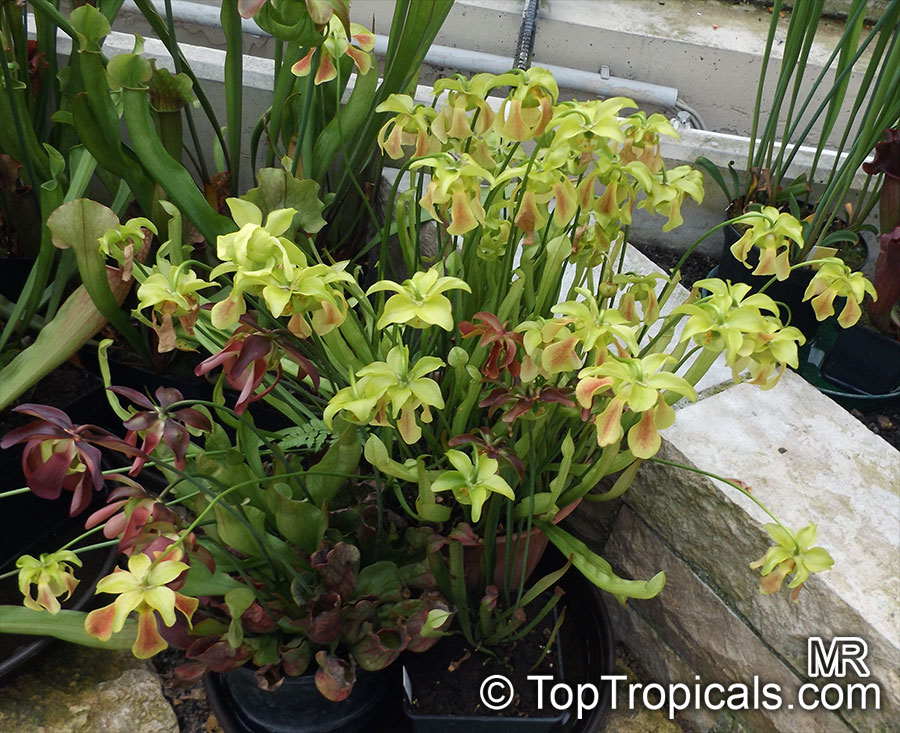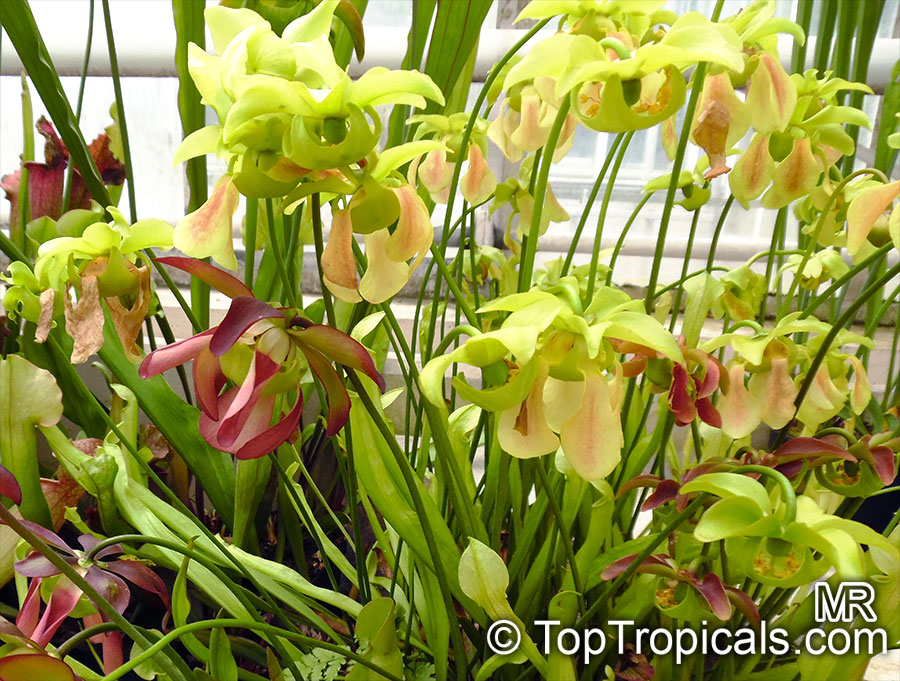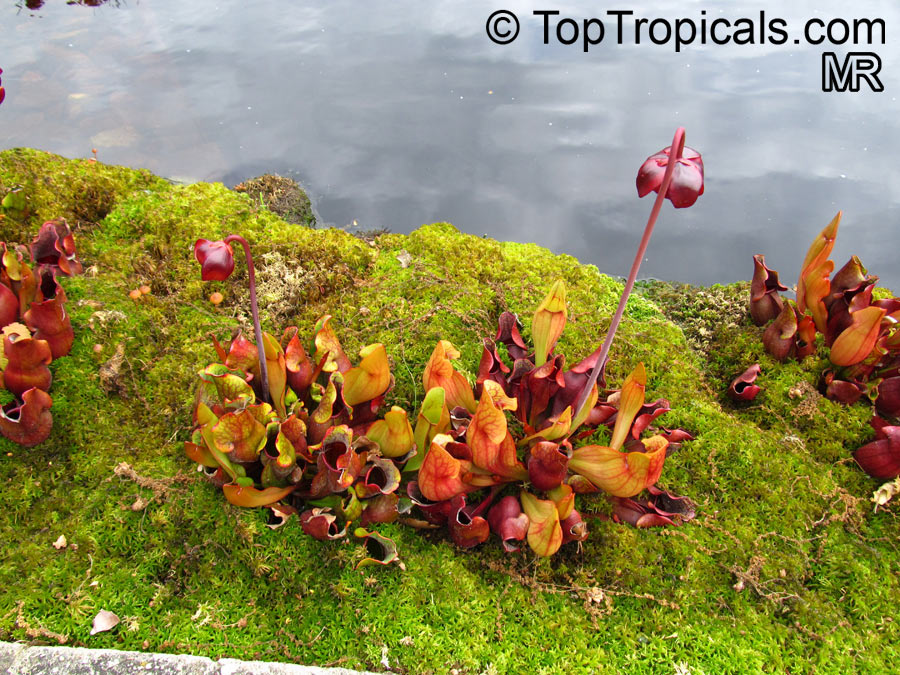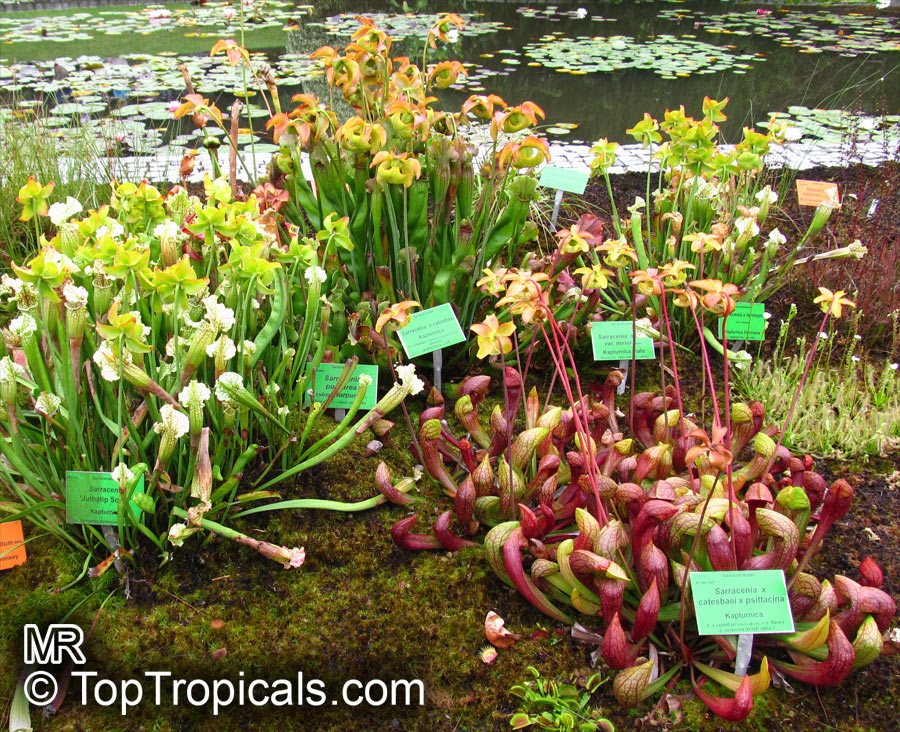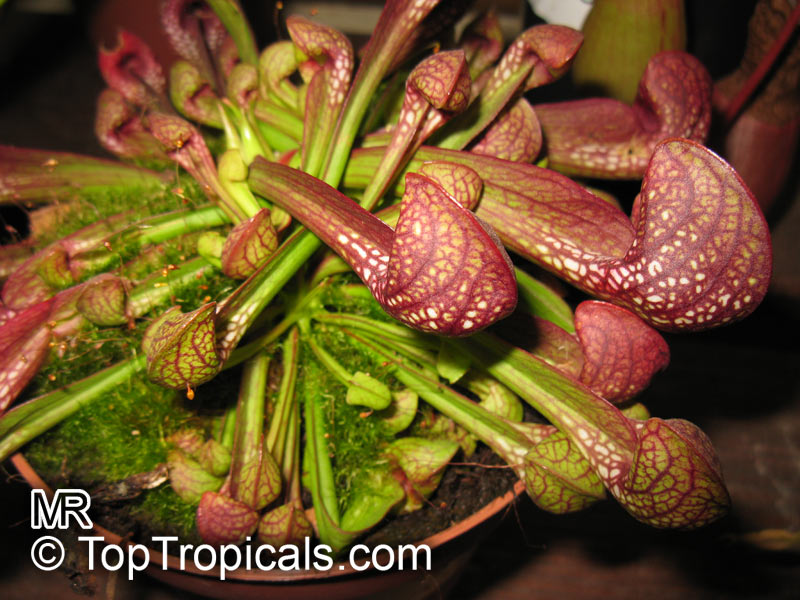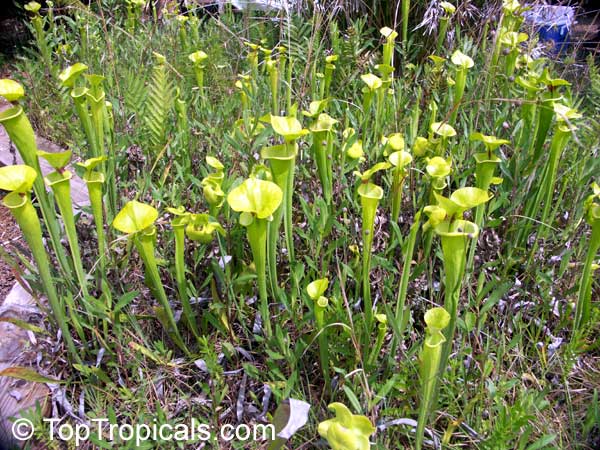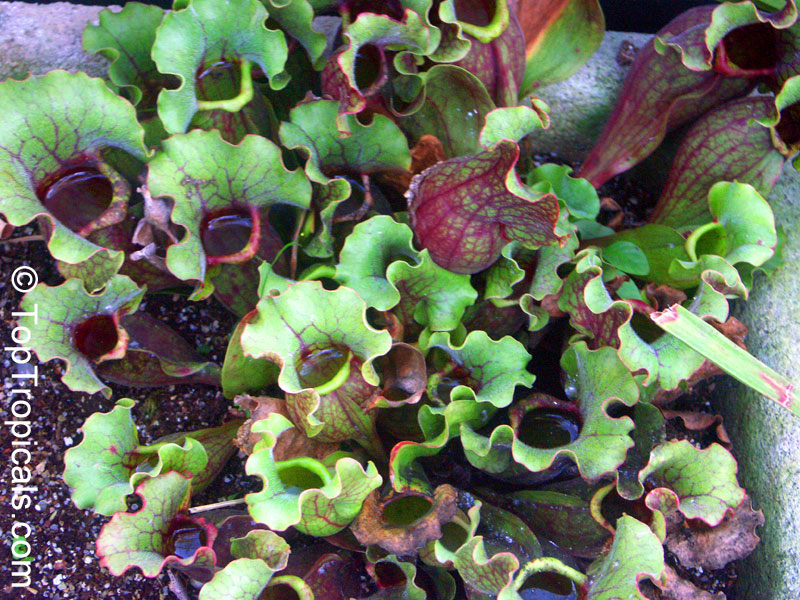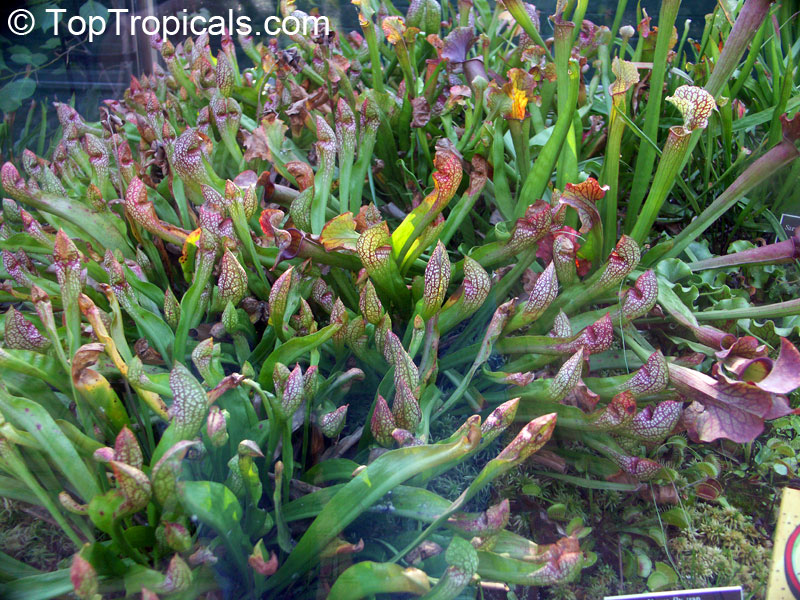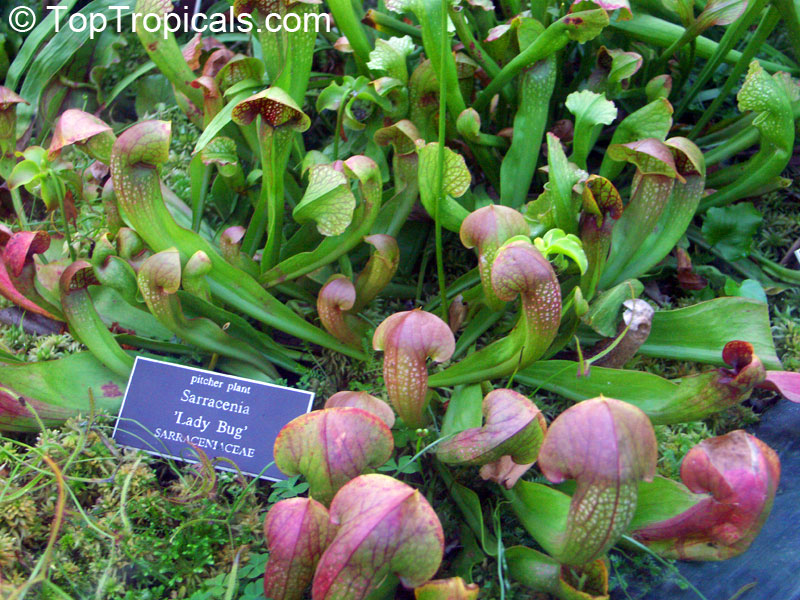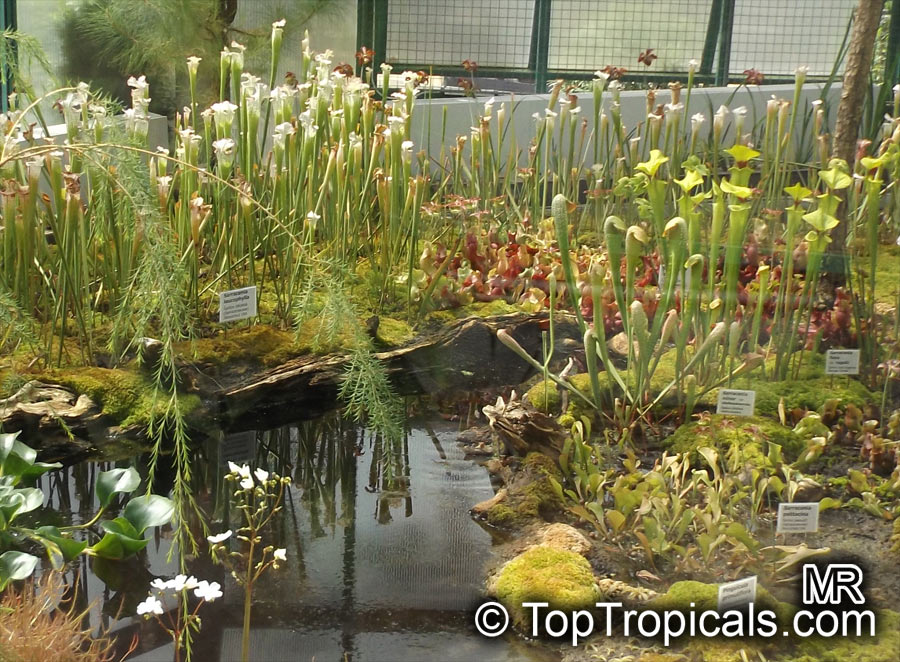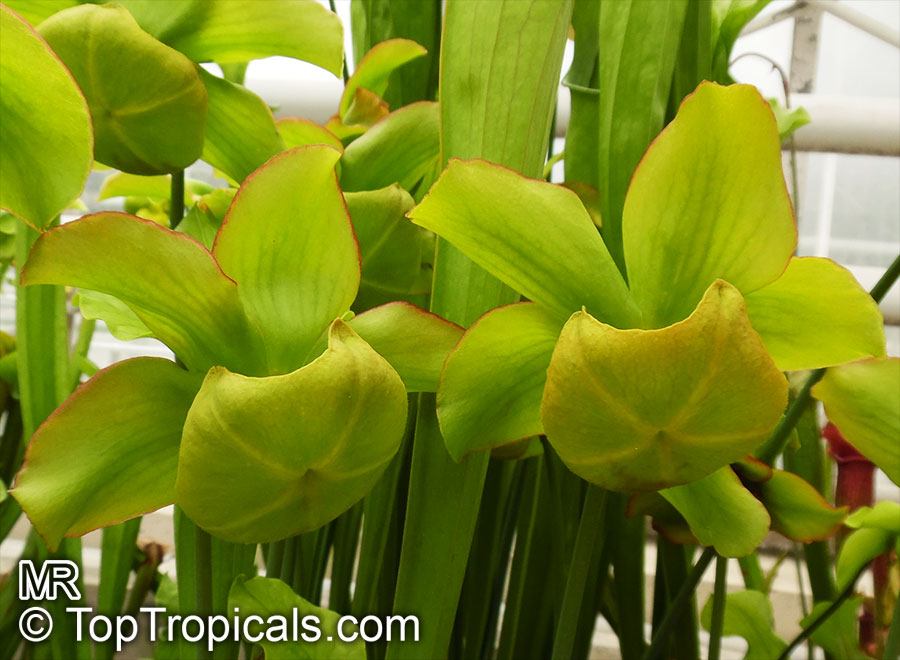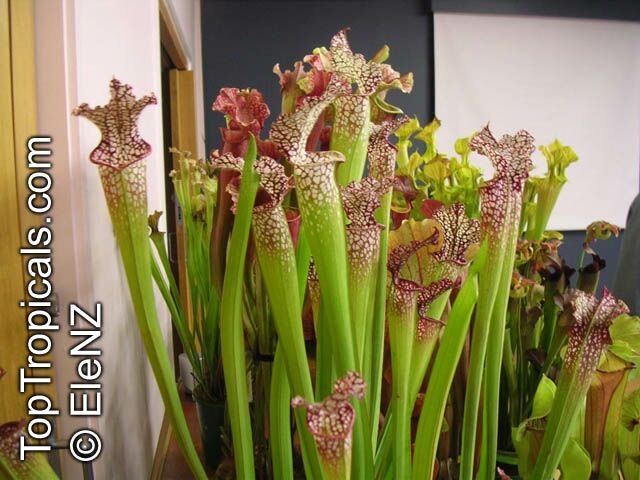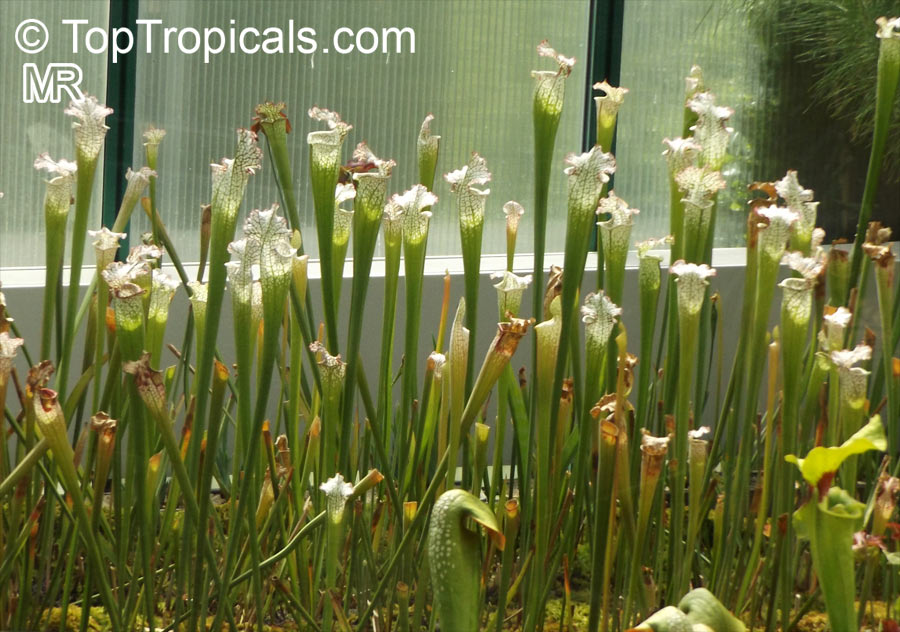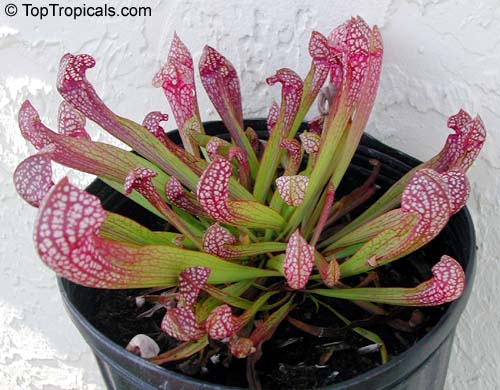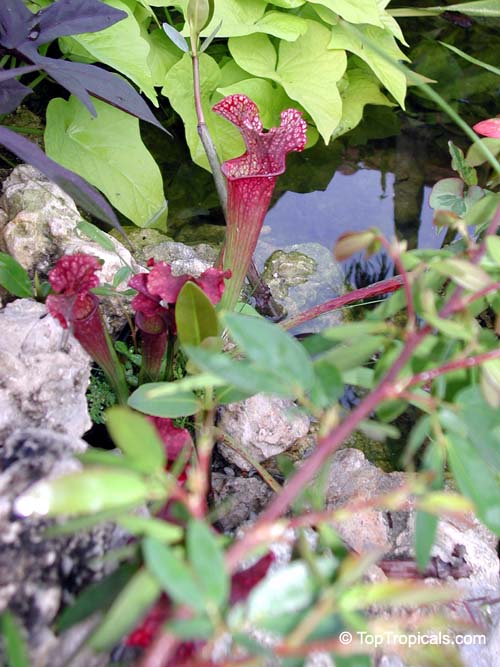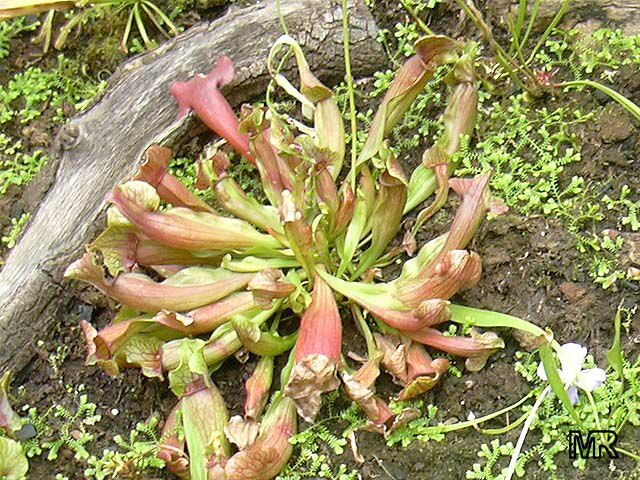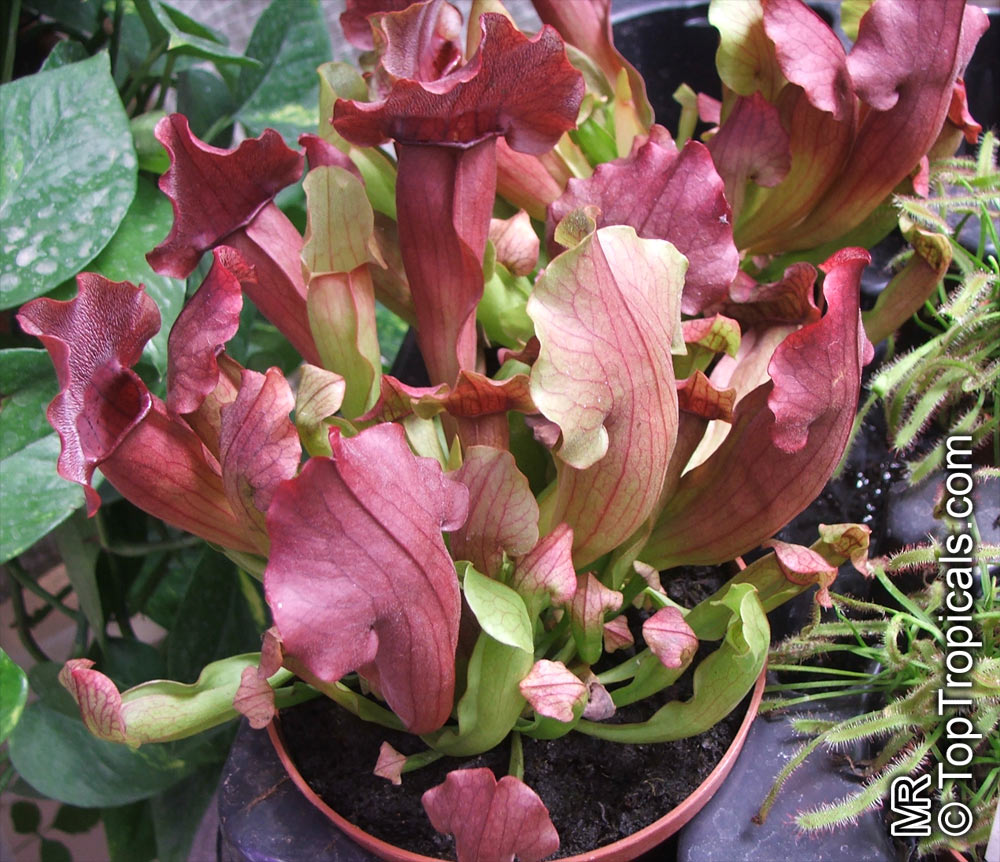Sarraceniaceae - Botanical Family
Top Tropicals Plant Encyclopedia
| Number of plants found: 5 |
Botanical name: Darlingtonia californica
Common names: California Pitcher Plant, Cobra Lily, Cobra Plant
Family: Sarraceniaceae
Origin: California





In addition to the use of lubricating secretions and downward-pointing hairs common to all North American pitcher plants to force their prey into the trap, this species carefully hides the tiny exit hole from trapped insects by curling it underneath and offering multiple translucent false exits. Upon trying many times to leave via the false exits, the insect will tire and fall down into the trap. The slippery walls and hairs prevent the trapped prey from escaping. The only other species that utilizes this technique is the Parrot Pitcher Plant, Sarracenia psittacina.
Botanical name: Heliamphora nutans
Common names: Marsh Pitcher Plant, Nodding Sun Pitcher
Family: Sarraceniaceae
Origin: South America





Heliamphora nutans is a highland plant preferring consistently cool and humid conditions, and loose well drained soil. It is native to several Venezuelan Tepuis including: Mount Roraima, Kukenan, Yuruani, and Wei Assipu. In cultivation, these plant do well in a terrarium in an air-conditioned room with bright indirect light.
Botanical name: Heliamphora parva
Common name: Marsh Pitcher Plant
Family: Sarraceniaceae
Origin: Venezuela







Heliamphora parva, also known as the Marsh Pitcher Plant, is a small native plant that originates from Venezuela. With showy, ornamental foliage, this plant is perfect for anyone looking for an exotic addition to their garden. Growing up to about two to five feet tall, this plant thrives in full sun or semi-shade, making it an easy and versatile option for just about any garden.
These plants love wet, boggy conditions and prefer to keep the soil moist, although you can also grow them in aquatic conditions if desired. You will also need to provide plenty of fertilizer to help them bloom and create their attractive foliage. The Marsh Pitcher Plant will produce striking white or off-white flowers, and as such makes a great ornamental plant in any garden.
If you are located in a colder climate, you can easily grow your Marsh Pitcher Plant by placing it in a pot and bringing it indoors during the winter months. For best results in cold regions, keep the pot in a warm location and provide plenty of sunlight, as well as regular water.
The Marsh Pitcher Plant is hardy in USDA Zones 9 to 11, making them a great choice for gardeners with warmer climates. With the right care and attention, they can be a beautiful addition to any garden, and you can look forward to enjoying their beautiful flowers in no time.
Botanical name: Sarracenia sp.
Common name: Pitcher Plant
Family: Sarraceniaceae
Origin: Eastern N. America










Sarracenia sp. (Pitcher Plant) is a versatile and beautiful native plant to Eastern North America. As its scientific name implies, this plant is a carnivorous species, whose pitcher shaped leaves trap insects for it's nourishment in nature. Growing up to 2 feet (61 cm) in height with ornamental foliage, the Pitcher Plant comes in a variety of colors, including green with purple tints, off-white, red, crimson, vinous, and yellow-orange.
Being a hardy species, the Sarracenia sp. (Pitcher Plant) thrives in full sun or semi-shade conditions, as well as bog or aquatic areas with moist and peaty soil. It is suitable for any USDA Zone between 9 - 11. During the active growing period, the soil must be kept moist, while cool and humid conditions should be used in the winter.
In regards to the propagation of the Pitcher Plant, it can be either done through seed or by dividing the plant in the spring season. As a groundcover or a low-growing shrub, this specimen can also be used to beautify your garden beds or a potted environment. In colder regions, planting in pots will ensure sufficient protection during frosty weathers. To ensure the full potential of the Plant, be sure to keep the soil moist and provide enough sunlight for its growth.
Overall, the Sarracenia sp. (Pitcher Plant) is an attractive garden plant, known for its plentiful and colorful flowers. Furthermore, it is a flood-tolerant species, so these plants can still thrive in damp environments. Its varied color spectrum and adaptability make this specimen a great asset to any garden, and its carnivorous quality ensures that the population of pests remain under control.
Botanical name: Sarracenia wrigleyana
Common name: Scarlet belle pitcher plant
Family: Sarraceniaceae






Carnivorous aquatic (marginal) plant. A must to have for every pond.
Use link to repeat this search:
https://toptropicals.com/cgi-bin/garden_catalog/cat.cgi?search_op=and&keyword_op=and&language=e&family=Sarraceniaceae
&number=10&no_change_lang=1&user=tt&sale=1&first=0
